개념추상현실주의 화가, 개념추상 실재(real exstence) 회화의 개념추상 미술비평 [5] 현대미술평론가 루이, 현대미술가 실재 개념추상 존재리얼리즘(exstence realism) 화가 최철주의 현대미술비평과 현대미술디자인비평: 현대미술 오늘날 현대미술평론가 최철주의 미술비평 현대추상미술화가비평: 최철주 욕망개념 추상 팝아트는 상대방 욕망예술의 추상개념적 접근과 팝아트의 디자인 형태와 언어추상적 이미지를 결합한 것이다. 그의 욕망 개념, 즉 개념 추상 예술이 나타나고 형이상학적 철학적 빛 속에서 강조되는 언어적 의미의 개념과 충돌하는 그림이 인공 조명으로 극적인 사건 이미지를 만들어낸다. & 현대미술의 추상회화를 디자인하는 추상 현대미술: 추상화가 루이 최철주의 현대 개념미술은 타자의 욕망을 주제로 한 비실재로서 실제적 조형성의 흔적과 가역적 빛의 음영으로 개념을 추상하는 미술이다. 이는 초기 개념미술의 개념으로 어떤 회화성의 복귀, 즉 실재의 자리를 대리하는 타자의 욕망을 추상하는 추상화다.
개념 추상 리얼리즘 회화: 개념 추상의 의미 구조로서의 이미지를 상징하는 최철주의 개념 추상 리얼리즘 회화는 실질적인 형식과 가역적인 빛의 흔적을 존재로 하여 개념을 추상화한 개념 추상 리얼리즘 미술입니다. 이것이 초기 개념 미술의 개념으로, 현실 세계를 대표하는 타인의 욕망을 추상화한 개념 추상 리얼리즘 회화입니다. 그의 리얼리즘는 추상적인 디자인 과정과 철학 이론을 통해 욕망의 시각적 표현을 탐구함으로써 언어적 의미로 구성된 매력적인 사실적 이미지이다. 상징적인 언어적 의미와 사실주의적 이미지는 분열을 통해 현실과 만난다. 현실로서 욕망의 개념의 대상으로서의 사건의 이미지는 사회의 현상적 이미지로 드러나지만, 비현실적인 그림으로서 추상과의 만남입니다. 따라서 최철주의 개념적 추상적 사실주의는 일상 뉴스에서 현실적 추상의 대상으로 등장했던 사건들의 이미지를 예술적 그림으로 형성함으로써 전형적이고 일반화됩니다.
또한, 최철주의 개념적 추상적 현실주의 추상화는 일상 뉴스의 현실적 인식 구조를 사건 이미지와 타인의 추상적 욕망이라는 개념으로 식별하는 개념적 추상적 현실주의 이미지로 명시되어 있으며, 이는 추상적 구조를 문학화하는 알레고리 현상입니다. 이것의 예로서의 개념추상 리얼리즘 회화는: 유리창에 욕망을 비친 거울의 개념추상 리얼리즘 초상 렌더링 A conceptual abstract realism portrait rendering of a mirror reflecting desire on a window

Louis Choi Chul-joo, a portrait of a mirror reflecting its desire on the window, 113X165cm, acrylic and composite materials on cloth, 2025
유리창에 욕망을 비친 거울의 개념추상 리얼리즘 초상 렌더링
유리창에 욕망을 비친 거울의 초상은 추상적 구조를 언어적 의미로서의 리얼리즘으로 렌더링한 현실주의 그림은 현실계에 실존하는 추상적 존재로서의 형이상적 이미지이다.
미적 구조로서 그림은 추상 개념에서 현실계에서 존재하는 이미지와의 구별된 실재를 문학적으로 왜곡한 언어적 의미를 가진다.
따라서 추상 개념을 타자의 욕망으로 언어적 의미로 해석한 최철주의 욕망공식을 통해 실재 이미지로 귀결한 것이 현대 개념추상 리얼리즘이다.
이것은 현실계에서 추상적 욕망 개념을 언어적 의미를 실존하는 언표적 이미지로 현실 구조로 해석한 현실주의다.
여기서 현실 구조의 오브제를 사건과 공연 이미지로서 존재적 의미론을 적용하여서 실재계의 현상적 이미지로 표상해서 추상 구조를 개념적 현실과 동일시한다.
추상 개념적 리얼리즘 그림은 사건 이미지의 사진을 모티브로 한 주체를 현실계에서 일상에서 특정된 뉴스 리브의 사건의 현장 사진을 사회적 현상에서 유발되는 리얼리즘 이미지를 욕망공식으로 반복해서 디자인하여서 렌더링한다.
개념추상 리얼리즘 추상디자인 프로세스는 기호적 구조로서 추상적 오브제를 타자의 욕망 구조를 리얼리즘 추상화하는 과정이다. 이것은 상징계의 기호적 장치로서 실재와의 분열된 간극을 만든다. 그 간극은 실재의 리얼리즘 구조를 인식할 수 있도록 가역적 빛으로 조명하여서 개념 추상적 리얼리즘 추상화를 구성한다.
이에 따라 개념 추상적 리얼리즘 추상디자인 프로세스는 다음과 같다.
1. 개념추상 리얼리즘 피사체의 구조를 가역적 빛의 음영적 구조로서 실제화하는 것은 지난 시간성에 따라 조명된 형태를 반복해서 시각적으로 인식할 수 있도록 현재 오브제를 가역적 빛으로 조명한다. 그리고 시간성에 따라 현재 시선으로 오브제가 디자인으로 반복되어 리얼리즘 이미지로 보이도록 그 오브제의 개념을 추상한 인과성으로 예상할 수 있는 철학적 결과로서 개념 추상적 리얼리즘 추상화을 구성하는 디자인 컨셉을 정한다.
2. 개념추상 리얼리즘의 오브제가 상징계애서 비언어적 의미로서 결핍된 욕망이 소외되어 욕망의 주체로서의 본질을 상실하여서 언어적 의미의 전단계에서 기호적 존재 이미지로 공시된 문법에 따른 추상적 욕망 개념으로 통시된 리얼리즘 이미지로 분열하여서 욕망 구조의 주체로서 리얼리즘 이미지를 언어적 통시적으로 의미화 즉 욕망 구조의 주체로서의 실재론적 이미지는 언어적, 시대착오적으로 의미가 존재한다.
3. 리얼리즘 이미지의 디자인은 개념추상 리얼리즘의 언어적 의미가 결핍된 이미지로서 욕망 구조가 재주체화되어서 언어적 의미의 이미지가 또 다른 욕망 구조를 이루는 사후적 효과로서 디자인을 반복하여서 새로운 개념추상 리얼리즘 이미지를 반복해서 디자인한다. 디자인의 연쇄에 따라 이미지를 구성하는 가역적 빛의 방향과 시점은 시간성에 따라 원근법적 시각체계의 전 단계로서 시각 구조의 선 공간 즉 언어적 의미의 이미지가 욕망 구조를 이루는 시공간과 사후적 이미지의 효과를 이루는 가역적 빛이 연속성을 가진 존재적 자리에서 교차점에서 리얼리즘 이미지를 연출한다.
4. 리얼리즘 추상화의 구성은 디자인으로 연출된 이미지를 원근법적 시점과 분리된 가역적 빛의 다중적 시점에서의 음영으로 구성된 무의식적 구조의 언어적 의미의 다충적 구조 이미지를 연출하여서 입체주의 단일적 시점에서 해체되면서 순간적으로 응시할 수 있는 살재로서 처녀들은 분열된 주체로 추상된다.
5. 개념추상 리얼리즘 추상화 렌더링은 욕망의 개념적 추상적 사실주의 추상화로 표현 의식 수준에서 지각할 수 없는 결핍된 욕망과 언어적 욕망의 개념적 추상적 사실주의로서 철학적 심리 구조를 시각화하여서 불충분한 욕망 이미지를 나타내는 개념적 추상과 비현실적 사실주의의 교차점에서 욕망 개념의 언어적 의미의 리얼리즘으로 렌더링한다. 이것은 개념추상 리얼리즘 추상화가 됨에 따라 가역적 빛의 음영으로 보이지 않는 욕망의 색조와 형태를 드러내는 무의식 욕망을 개념추상 리얼리즘 추상화로서의 지도가 된다.
상징계에서의 언어적 의미는 추상적 오브제에 대한 계속적인 상징적 존재일 뿐이다. 이 존재를 개념추상 리얼리즘 이미지로 렌더링한 것은 하나의 기표(Signifiant)적 이미지이다. 개념추상 리얼리즘을 동시대에서는 수용될 수 없는 상징계의 영역에서 분리된 영역인 실재에서 개념추상 리얼리즘의 사건 이미지를 개념추상 리얼리즘 이미지를 추상디자인해서 그려낸다.
이것은 새로운 개념추상의 리얼리즘으로 전형화하여서 사실적 추상화에 대한 오브제로서 일상적 뉴스에서 출현한 사건 이미지를 추상화로 한 예술적 그림으로 형성하여서 일반화한다.
이렇게 최철주의 개념추상 리얼리즘 추상디자인 프로세스는 일상적 뉴스의 현실적 인식 구조를 사건 이미지와 추상적 타자의 욕망 개념과 동일시하여서 추상 구조를 문학적으로 표현하는 알레고리 현상적 리얼리즘 이미지로 명시하는 과정이다.
개념적 추상적 리얼리즘의 정의는 철학적 개념, 언어적 의미 구조, 그리고 현대 미술에서 현실의 시각적 표현을 결합한 새로운 개념적 추상 이론으로, 단순한 시각적 추상이나 타인의 욕망을 상징적으로 숨기지 않고 종교적 규범으로 포장된 은유적 주제의 개념 예술을 넘어서는 사실주의 미술 사조입니다.

개념 추상의 결과로서 새로운 문학적 구조의 수학적 디자인을 통해 미적 구조를 언어적 의미와 리얼리즘 이미지를 통합하여서 문법적으로 구성으로 욕망을 시각화하는 것이 최철주의 개념추상 리얼리즘 추상화 렌더링 프로세스이다. 그 렌더링의 프로세스는 다음과 같다.
1. 언어적 의미와 시각적 이미지의 통합: 현재의 욕망을 반영한 회화적 구조의 오브제로서의 사건 이미지에 타자와의 욕망을 언어적 의미를 직시해서 미적 의미를 가질때에 추상적 욕망 개념을 실재화하고, 회화 속 이미지가 언어적 의미 구조와 긴밀히 연결되로록 욕망 구조로 대리하는 오브제로서 사건 이미지와 동일한 욕망 개념을 무의식과 실재 이미지로 분열하여서 무의식적 욕망을 존재적 실재 이미지로서 모델링한 이미지를 스케치한다.
현재의 욕망 개념의 스케치 형태는 절대적인 욕망 개념은 추상화에서 보이는 기호적 은유로써 그 욕망 개념을 타자의 욕망으로 추상하지만 모방적 그림의 범주를 넘지 못한다. .
따라서 추상 개념을 타자의 욕망으로 언어적 의미로 해석한 최철주의 욕망공식을 통해 실재 이미지로 귀결한 것이 현대 개념추상 리얼리즘 스케치이다.
이것은 추상적 욕망의 개념을 현실 세계에서 언어적 의미를 지닌 표현적 이미지로 해석하는 리얼리즘으로, 회화적 사건 이미지가 언어적 의미 구조와 밀접하게 연결되어 있습니다. 여기서 실존적 의미론을 사건 및 공연 이미지로 적용하여 현실 구조의 대상을 현실 세계의 현상적 이미지로 표현하고 추상적 구조를 개념적 현실과 동일시한다.
2. 추상적 욕망 개념의 시각화: 추상적 욕망 개념에서 실재 이미지와의 차이를 언어적 개념의 의미로 받아들이고, 무의식적 욕망을 추상적 이미지로 형상화할 수 있도록 욕망과의 관계 구조를 이루는 추상적 이미지를 욕망 구조의 개념적 현실과의 언어적 의미가 만드는 실재 구조를 페인팅하여서 형상화한다. 이것은 종교적 관습에서 수용할 수 있는 사회적 제약(制約)에서 벗어나 그림 속 욕망의 조형적 현실을 숨기고 실재의 뉴스에 근거로한 사건 이미지를 추상하는 최철주의 개념추상 리얼리즘의 추상화다.
추상화는 언어적 의미를 지칭하는 주관적인 개념으로 구어체 발음과 이벤트 영상 방송의 시청 효과를 추상화하여 표현합니다. 이 추상화는 필요성 개념의 진정한 가치를 나타내며 뉴스에 의존하는 요소를 구현하는 표현적 미적 구조이다.
그 추상화는 구어체와 이벤트 비디오 방송의 시청 효과를 발음으로 식별하는 하나의 표현적 미적 구조로서 욕망 개념의 진리 값인 추상화로 표상한다.
3. 가역적 빛과 시간성의 예술적 실험: 개념추상 현실주의의 실험은 가역적 빛의 음영으로 구성한 추상화를 욕망과 현실이 동일한 언어적 의미에서 시간성에 따른 개념추상 리얼리즘의 렌더링한다. 여기서 시간성에 따른 욕망과 현실과의 의미적 관계를 형성함으로써 욕망의 구조를 추상화한다.
그 추상화에서 욕망의 추상적 실체는 욕망의 인과 구조 즉 이율배반적 동등성이 추상적 욕망 개념의 실재성을 아포리아 이미지에서 욕망의 원인적 구조로 한 실재 이미지로 욕망과의 의미 관계를 맺어서 욕망의 구조를 대리한다. 그 욕망 구조로서의 실재 이미지로 구성된 추상화는 보이는 은유의 형태적 이미지가 추상적 언어 의미가 실재로 전이된다.
따라서 가역적 인공 조명의 그림자를 통해 시간성에 따른 실존적 실재론을 탐구한 결과, 욕망의 구조가 가려진 추상적 의미로서의 변성 고정이 현실 이미지입니다. 즉, 추상화에서는 사회적 사건의 이미지로서 타자의 욕망이 추가적인 형태로 자리바꿈을 한다.
이렇게 개념적 추상적 사실주의 렌더링은 가역적 조명의 그림자를 통해 시간과 존재에 의해 제기되며, 사회 현상에 의해 유도된 사실적 이미지를 반복적으로 디자인하고, 욕망 공식을 가진 사실주의 이미지를 만들고, 사건 이미지를 기반으로 사회 현상에 의해 유도된 사실주의 이미지를 욕망 공식으로 반복적으로 디자인하고 렌더링한다.
사회적 현상에서 출현한 리얼리즘 이미지에서 등장한 개념 추상 구조는 상징계의 영역에서 분리된 실재계의 영역이다. 사건 이미지의 추상성은 개념적 추상을 한 현상 구조로서 실재라고 한다.
최철주의 “카툰만평”은 사건 이미지의 상징계의 영역에서 벗어나 실재의 개념추상 리얼리즘 이미지를 <나팔꽃>에 담는다. 이것은 카툰만평을 주체로 한 타자의 욕망을 대신하는 리얼리즘 이미지가 동시대의 오브제로서 <나팔꽃>과 중첩함으로써 리얼리즘 그림을 보는 이에게 추상적 욕망 개념에 대한 혼란을 야기 시킨다. 그리고 상상계에서의 허상에 만족하지 않고 리얼리즘 그림의 욕망을 타자를 통해 가역적 빛의 음영으로 렌더링하여서 상징계에서 탈출을 시도한다. 그리하여 상징계의 추상적 영역과 분리된 현재의 개념추상 리얼리즘을 이룬다.
따라서 원근감 시각체계 시스템과 달리 현재의 추상 개념을 반영하는 리얼리즘 렌더링은 욕망 구조의 개념 추상적 시간성에 따라 표면과 뒷면이 겹치는 상징적 현실 이미지를 반복적으로 디자인하고, 동일한 표면에 여러 개의 가역적인 빛으로 욕망의 질감을 만들어 단일 이미지와 동일한 구조로서 개념추상 리얼리즘을 구현한다.
이는 상징적 세계에서 대상, 즉 사건 이미지를 은유적으로 표현하는 주체와 타자의 욕망이 은폐된 대상의 추상적 의미와 사실주의 이미지를 보여주지 않고 타자의 욕망으로 고정된 개념적 추상적 사실주의 회화의 현대적 실존적 이미지입니다. 보이지 않는 은폐는 추상으로서의 의미와 형상을 만들어냅니다. 그러나 대상을 현실로 이해함으로써 추상 속의 또 다른 현실로서의 개념적 추상적 사실주의 그림은 현대 사회적 욕망을 상징하는 상징적 현실 구조의 이미지로 추상한다.
이러한 현실주의적 이미지 구성은 피사체로서 현실계에 존재하는 추상적 오브제를 형이상학적 구조로 해석한다. 이것은 실제 현실적 구조로의 존재성에 대한 형이상학에서 사회적 사건 이미지의 사진을 모티브로 한 욕망 개념의 오브제로서 사진이 아닌 추상화로서 가역적 빛의 음영으로 개념추상적 리얼리즘 그림으로 재구성한다.
여기서 추상개념의 오브제를 리얼리즘 이미지로 재구성하는 추상적 욕망 개념은 현실계에서 추상이 가능한 언표적 존재 즉 추상적 존재의 가능한 존재적 의미가 이미지로 구성함으로써 결과로서 실재 이미지로 표상한 그림을 추상화로 귀결되는 원인을 제공한다.
따라서 추상적으로 해석되는 욕망의 개념은 언어적 의미를 문학적 구조의 틀 안에서 추상적인 존재로 변환함으로써 문법적으로 구성된 개념적 추상적 현실주의 이미지로 연출된다..
개념 추상적 실재론의 화가는 그림에서 종교나 정치적 은유를 상징하는 또 다른 현실을 보여줍니다. 추상적 실재론에서는 최철주의 욕망 공식을 적용하여 개념 추상적 실재론을 해석하여 실제 표현에서 상징적 의미를 찾습니다. 여기서 진짜는 무의식적 욕망의 개념을 상징적 세계의 범주로 해석하는 언어적 의미와 개념추상 리얼리즘 이미지를 동일시하고 있다.
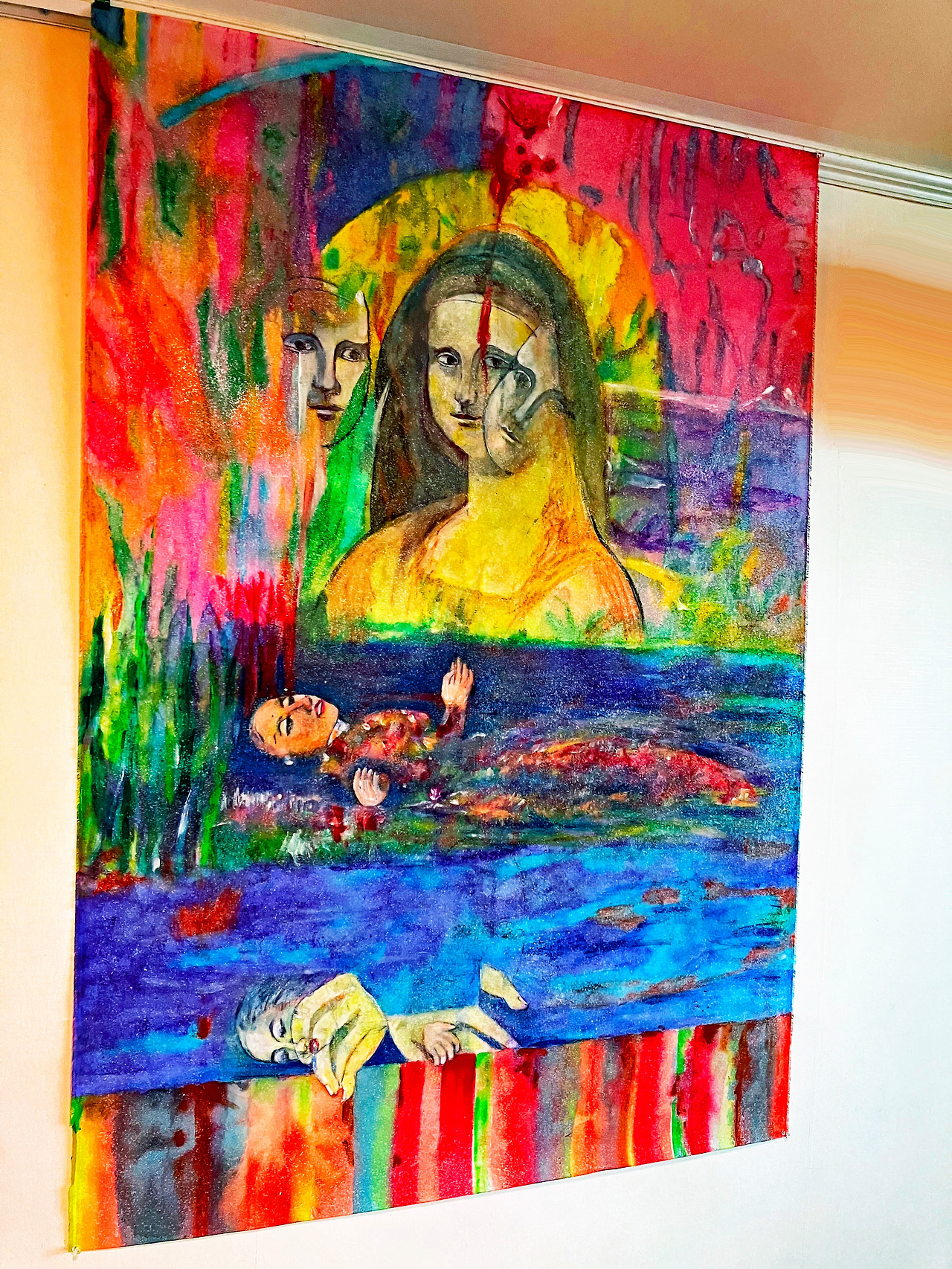
라캉은 프로이트의 언어적 분석을 ‘프로이트의 회귀 선언을 통해 받아들인다. 여기서의 언어는 소쉬르의 구조주의적 언어로 은유에서 출현하는 존재가 주체의 장소를 지시하지만 최철주의 개념추상 리얼리즘은 회화에서 언어적 표현도 은유성을 띠지만 사건 이미지를 재현하는 추상적 실재를 재현한 리얼리즘 이미지를 사건 이미지의 존재를 스케치한다.
회화로서 리얼리즘 이미지는 명시도를 증가시키는 명암 효과를 스케치하고 윤곽선의 경계를 색상으로 간격을 메운다. 이것은 사실적 이미지와 구별되는 개념추상 리얼리즘의 현실적 미적 구조로서 현실적 다면 구조와 본질적 구조이다.
따라서 최철주의 개념적 추상적 사실주의는 감각적 다면 구조를 가역적인 빛 음영으로 추상적 구성으로 재현하여, 대상의 본질적인 구조를 욕망 개념의 언어적 의미로 해석하는 상징적 사실주의 이미지를 만들어낸다.
거울 이론을 통한 추상적 실재론의 드러남은 거울 속 모나리자의 사실주의적 이미지를 동일시하는 상상에서 시작됩니다. 실재론의 이미지가 주체로서 추상적이지 않다는 것을 인식하고 개념적 추상적 실재론의 상징적 이미지와 실재론의 이미지를 분리하여 상징적 세계로 전환합니다. 여기서 상징적 언어적 의미와 실재론적 이미지는 분열을 통해 현실과 만난다. 현실로서 욕망의 개념의 대상으로서의 사건의 이미지는 사회의 현상적 이미지로 드러나지만, 거울 속 비현실적인 모나리자는 추상과의 만남입니다.
즉, 상징적인 언어적 의미와 추상적 현실주의 이미지는 분열을 통해 현실과 만나며, 욕망의 개념을 대상으로 한 사건들을 사회의 현상적 이미지로 드러내고 이를 개념적 추상적 현실주의 그림으로 추상화한다.
따라서 최철주의 개념적 추상적 사실주의는 일상 뉴스에서 현실적 추상의 대상으로 등장했던 사건들의 이미지를 예술적 그림으로 형성함으로써 전형적이고 일반화됩니다.
또한, 최철주의 개념적 추상적 현실주의 추상화는 일상 뉴스의 현실적 인식 구조를 사건 이미지와 타인의 추상적 욕망이라는 개념으로 식별하는 개념적 추상적 현실주의 이미지로 명시되어 있으며, 이는 추상적 구조를 문학화하는 알레고리 현상이다./ 글. 현대 미술평론가 최철주 (문화디자인박사)
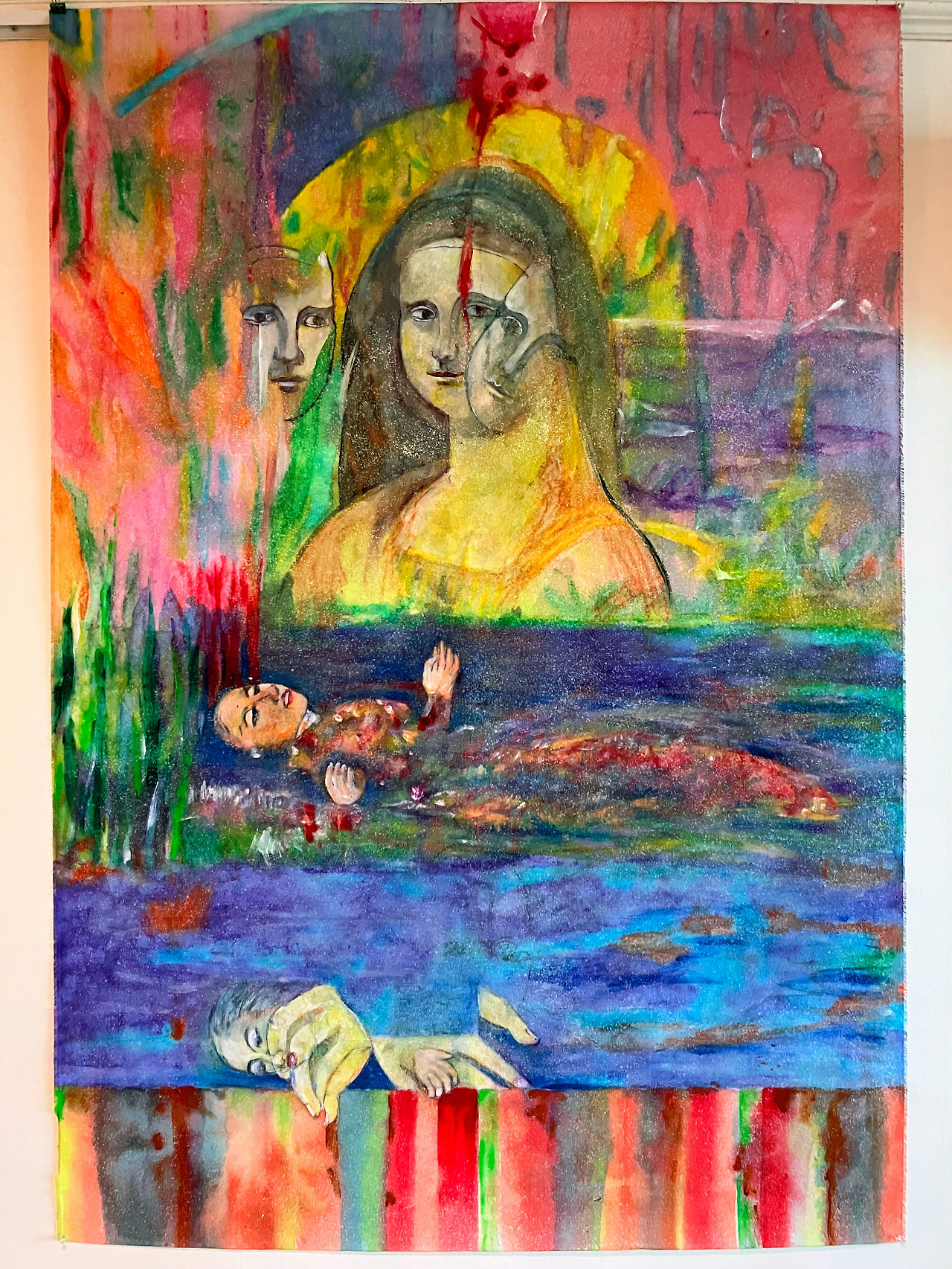
Louis Choi Chul-joo, a portrait of a mirror reflecting its desire on the window, 113X165cm, acrylic and composite materials on cloth, 2025
A conceptual abstract realism portrait rendering of a mirror reflecting desire on a window
The portrait of the mirror reflecting desire on the window is a realist image that renders an abstract structure into realism in a linguistic sense, and is an ideal image as an abstract being that exists in the real world.
As an aesthetic structure, a picture has a linguistic meaning that literary distorts the reality distinct from the image existing in the real world in an abstract concept.
Therefore, it is modern conceptual abstract realism that resulted in a real image through Choi Chul-joo's desire formula, which interpreted abstract concepts in a linguistic sense as the desire of others.
This is a realism that interprets the concept of abstract desire in the real world as a real structure with a verbal meaning as an existential expressive image.
Here, the object of the real structure is represented as a phenomenal image of the real world by applying existential semantics as an event and performance image, and the abstract structure is identified with conceptual reality.
Abstract conceptual realism paintings repeatedly design and render realist images induced by social phenomena as a desire formula, using the subject as a motif of a photo of an event image.
Conceptual Abstractionism The abstract design process is the process of abstracting an abstract object into a symbolic structure and abstracting the desire structure of others into realism. This creates a gap that is divided from reality as a symbolic device of the symbolic world. The gap constitutes a conceptual abstract realist abstraction by illuminating it with reversible light so that the structure of realism in reality can be recognized.
As a result, the abstract design process of conceptual abstract realism is as follows.
1. Conceptual Abstract Realism The current object is illuminated with reversible light so that the illuminated form can be repeatedly visually recognized according to the past temporality to actualize the subject's structure as a shaded structure of reversible light. And the design concept that constitutes conceptual abstract realism abstraction is determined as a philosophical result that can be expected with abstract causality so that the object is repeated as a design with the present gaze so that it appears to be a realistic image according to temporality.
2. The object of conceptual abstract realism is that the absence of desire as a non-verbal meaning is alienated from the symbolic world and loses its essence as the subject of desire. In the previous stage of linguistic meaning, according to grammar revealed as a symbolic image of existence, it was separated into a realist image recognized as an abstract desire concept and divided into a realist image, and the realist image as the subject of the desire structure is linguistically and diachronically meaningful.
3. The design of a realism image is an image that lacks the linguistic meaning of conceptual abstract realism, and the image in a linguistic sense is repeatedly designed as a post-effect of the desire structure being re-embodied, and a new conceptual abstract realism image is repeatedly designed. The direction and viewpoint of reversible light that make up the image along the chain of design are all stages of the perspective visual system according to temporality, and the line space of the visual structure, in which the image in the linguistic sense constitutes the desire structure, and the reversible light that constitutes the effect of the post-image produce a realism image at the intersection of the existential place with continuity.
4. Realistic abstraction creates a multi-loyal structural image of the linguistic meaning of unconscious structure composed of shadows at multiple points of reversible light separated from perspective, and girls are abstracted as divided subjects as talents that can be stared at momentarily while dismantled at a stereoscopic single point.
5. Conceptual Abstract Realism Abstractism Rendering is a conceptual abstract realism of wanting and linguistic desires that cannot be perceived at the level of expression consciousness, visualizing philosophical psychological structures and rendering them with linguistic meaning at the intersection of conceptual abstraction and unrealistic realism. As this becomes conceptual abstract realism abstraction, unconscious desires that represent the color tone and shape of desires invisible in the shade of reversible light become maps as conceptual abstract realism abstraction.
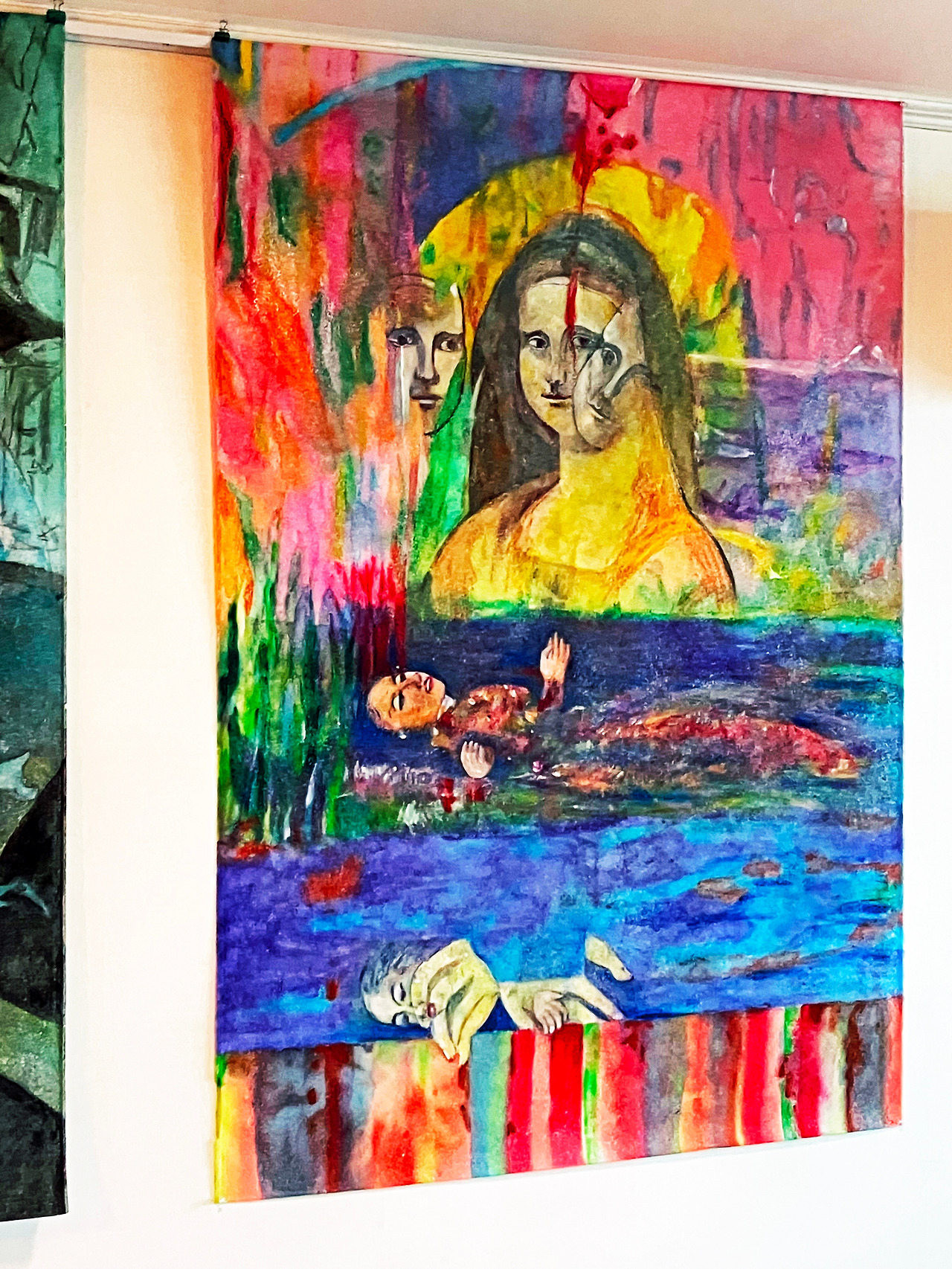
The linguistic meaning in the symbolic world is only a continuous symbolic existence for abstract objects. Rendering this existence in a conceptual abstract realism image is a single signifiant image. Conceptual abstract realism is drawn by abstract design of conceptual abstract realism images from reality, which is a region separated from the realm of symbolic systems that cannot be accepted in the contemporary era.
This is typicalized as a new conceptual abstract realism and generalized by forming an event image that appeared in everyday news as an object for realistic abstraction into an artistic picture.
In this way, Choi Chul-joo's conceptual abstract realism abstract design process identifies the realistic perception structure of everyday news with the event image and the abstract other's desire concept, and specifies the abstract structure as an allegory phenomenal realism image that expresses it literaryly.
The definition of conceptual abstract realism is a new conceptual abstract theory that combines philosophical concepts, linguistic semantic structures, and visual expressions of reality in modern art, a realist art trend that goes beyond mere visual abstraction or metaphorical subject conceptual art wrapped in religious norms without symbolically hiding the desires of others.
As a result of conceptual abstraction, Choi Chul-joo's conceptual abstraction rendering process visualizes desire in a grammatical composition by integrating linguistic meaning and realism images through a mathematical design of a new literary structure. The rendering process is as follows.
1. Integration of linguistic meaning and visual images: The abstract concept of desire is realized when the desire of others has an aesthetic meaning by facing the linguistic meaning in the image of an event as an object of a pictorial structure reflecting the present desire, and the image in the painting is closely connected to the linguistic meaning structure. As an object representing the concept of desire, the same concept of desire as the event image is divided into unconscious and real images, and an image modeling unconscious desire as an existential real image is sketched.
As for the sketch form of the current concept of desire, the concept of absolute desire is a symbolic metaphor shown in abstraction, and the concept of desire is abstracted as the desire of others, but it does not go beyond the scope of an imitative picture.
Therefore, it is the modern conceptual abstract realism sketch that resulted in a real image through Choi Chul-joo's desire formula, which interpreted abstract concepts in a linguistic sense as the desire of others.
This is a realism that interprets the concept of abstract desire as a real structure as a expressive image with a linguistic meaning in the real world, where pictorial event images are closely connected with linguistic semantic structures. Here, by applying existential semantics as an event and performance image, the object of the real structure is represented as a phenomenal image of the real world, and the abstract structure is identified with conceptual reality.
2. Visualization of Abstract Desire Concept: To accept the difference from the actual image in the concept of abstract desire as the meaning of the linguistic concept, and to embody the unconscious desire as an abstract image, the abstract image that constitutes the relationship structure with desire is painted and embodied in the actual structure created by the linguistic meaning of the conceptual reality of desire structure. This is an abstraction of Choi Chul-joo's conceptual abstract realism, which hides the formative reality of desire in pictures and abstracts event images based on real news, away from the social constraints (制約) acceptable in religious customs.
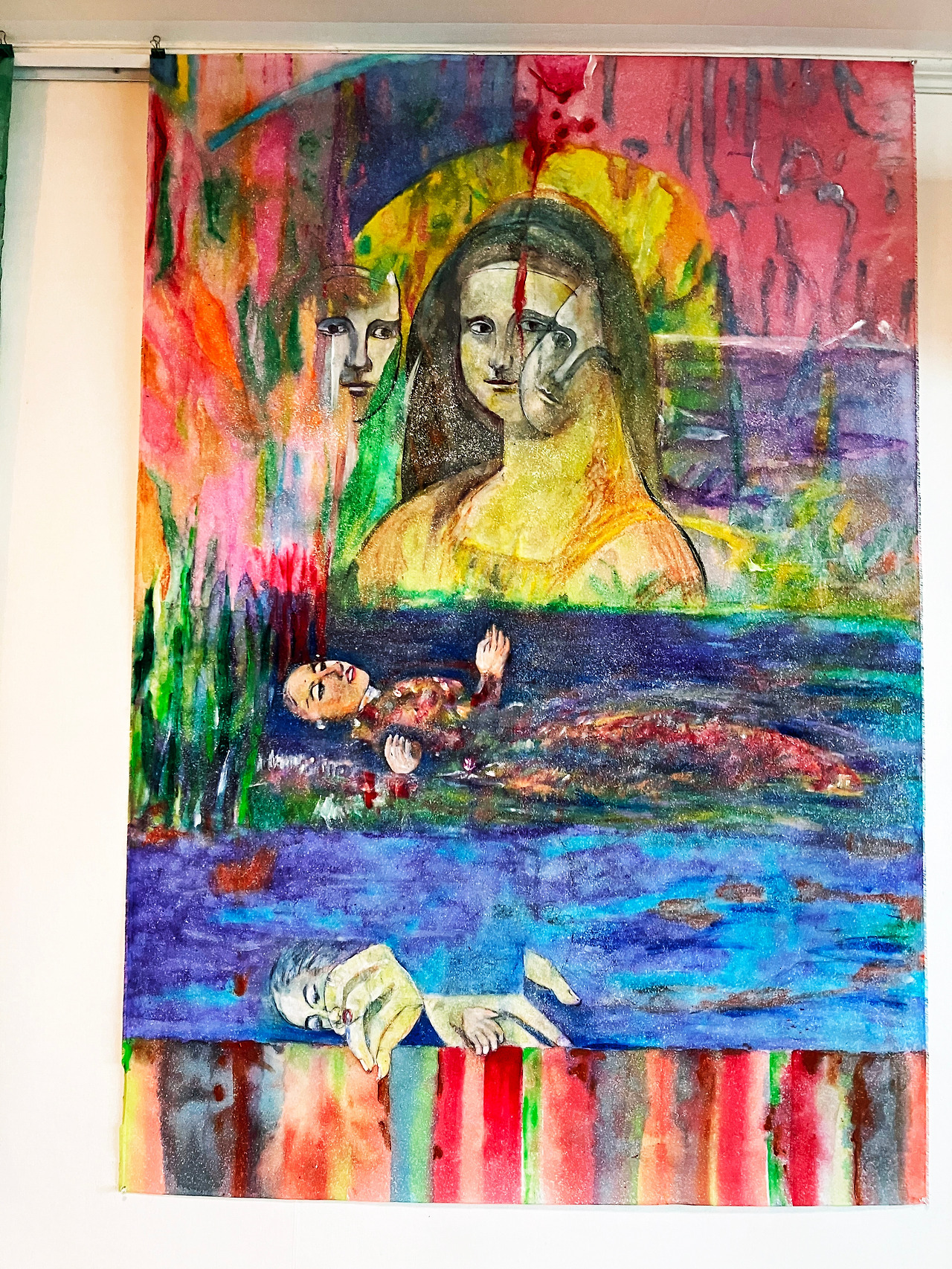
Abstraction is a subjective concept that refers to linguistic meaning and expresses the viewing effect of colloquial enunciation and event video broadcasts in abstraction. This abstraction represents the true value of the concept of need and is an expressive aesthetic structure that embodies the elements that depend on the news.
The abstraction is represented as an abstraction which is a truth value of the concept of desire as an expressive aesthetic structure of one speech act that identifies the viewing effect of colloquial language and event video broadcasting as an enunciation.
3. The artistic experiment of reversible light and temporality: The experiment of conceptual abstract realism renders abstraction based on temporality in the linguistic sense that desire and reality are the same. Here, the structure of desire is abstracted by forming a semantic relationship between desire and reality according to temporality.
In the abstraction, the abstract reality of desire is the causal structure of desire, that is, the antinomic equivalence represents the structure of desire by forming a semantic relationship with desire as a real image in which the reality of the abstract concept of desire is the causal structure of desire from an aphoria image. In abstraction composed of real images as the structure of desire, the morphological image of visible metaphor is transferred to abstract language meaning.
Therefore, the real image as a result of exploring the existential realism according to temporality through the shadow of reversible artificial lighting is a metamorphic fixation as an abstract meaning in which the desire structure is obscured. In other words, in abstraction, the other's desire as an image of social events transforms into an additional form.
As such, conceptual abstract realism rendering is raised by time and existence through the shadow of reversible lighting, repeatedly designing realistic images induced by social phenomena, creating a realism image with a desire formula, and the subject based on the event image repeatedly designing and rendering a realist image induced by social phenomena with a desire formula.
The conceptual abstract structure that emerged from the realist image that emerged from the social phenomenon is the area of the real world separated from the area of the symbolic world. The abstraction of event images is called reality as a phenomenal structure with conceptual abstraction.
Choi Chul-joo's "Cartoon review" breaks away from the realm of the symbolic world of the event image and captures the conceptual abstract realism image of reality in "morning glory". This causes confusion about the concept of abstract desire for viewers of the realist painting by overlapping the image of realism with "Napal Flower" as a contemporary object that replaces the desires of others with Cartoon review as the main subject. He is not satisfied with the illusion in the imagination world and attempts to escape from the symbolic world by rendering the desire of a realist painting in reversible shades of light through the other. Thus, the present conceptual abstract realism is achieved, separated from the abstract area of the symbolic world.
Therefore, unlike the perspective visual system system, realism rendering, which reflects the current abstract concept, repeatedly designs symbolic reality images in which the surface and the back overlap according to the conceptual abstract temporality of the desire structure, and creates the texture of desire with multiple reversible lights on the same surface to realize conceptual abstract realism as the same structure as a single image.
This is a contemporary existential image of a conceptual abstract realism painting that is fixed as the desire of the other, without showing the subject to metaphorically express the object, that is, the event image, in the symbolic world, and the abstract meaning and realism image of the object in which the desire of the other is concealed. Invisible concealment creates meaning and the shape of realism as an abstract. However, by understanding the object as a reality, the conceptual abstract realism picture as another reality in abstraction is abstracted into an image of a symbolic reality structure that symbolizes contemporary social desires.
This realist image composition interprets an abstract object that exists in the real world as a metaphysical structure as a subject. This is an object of the concept of desire based on a photograph of a social event image in metaphysics for its existence as a real structure, and it is reconstructed as a conceptual abstract realism picture in a shade of reversible light as an abstraction rather than a photograph.
Here, the abstract desire concept, which reconstructs the object of abstract concept into a realistic image, provides a cause that leads to abstraction of a picture represented by a real image as a result by composing images of expressive beings that can be abstracted in the real world.
Thus, the concept of desire, interpreted abstractly, is transformed into a grammatically constructed conceptual abstract realism image by transforming linguistic meanings into abstract beings within the framework of literary structures.
The painter of conceptual abstract realism shows another reality that symbolizes religion or political metaphor in painting. In abstract realism, Choi Chul-joo's desire formula is applied to interpret conceptual abstract realism to find symbolic meaning in real expressions. The real thing here is that the linguistic meaning that interprets the concept of unconscious desire as a category of the symbolic world and the image of conceptual abstract realism are equated.
Lacan accepts Freud's linguistic analysis through Freud's declaration of regression. The language here is Saussure's structuralist language, where the being that appears in the metaphor dictates the place of the subject, but Choi Chul-joo's conceptual abstract realism sketches the existence of an event image that reproduces the abstract reality that reproduces the event image even though the verbal expression is metaphorical in painting.
As a painting, a realist image sketches the contrast effect that increases the clarity and fills the gap with color on the boundary of the outline. This is a realistic and essential structure as a realistic aesthetic structure of conceptual abstract realism that is distinct from a realistic image.
Accordingly, Choi Chul-joo's conceptual abstract realism reproduces the sensual multifaceted structure in an abstract composition with reversible light shades, rendering the symbolic realism image that interprets the essential structure of the object in the linguistic meaning of the concept of desire.
The revelation of abstract realism through mirror theory begins with the imagination of equating the realist image of the Mona Lisa in the mirror. Recognizing that the image of realism is not abstract as a subject, it transitions to the symbolic world through separation from the symbolic image of conceptual abstract realism and the image of realism. Here, the symbolic linguistic meaning and realist image meet reality through division. As a reality, the image of the event as the object of the concept of desire is revealed as a phenomenal image of society, but the unrealistic Mona Lisa in the mirror is a encounter with abstraction as a picture.
In other words, symbolic linguistic meanings and abstract realist images meet reality through division, revealing events targeted at the concept of desire as phenomenal images of society and abstracting them as conceptual abstract realism paintings.
Symbolic linguistic meanings and realist images meet reality through division. As a reality, the image of an event as an object of the concept of desire is revealed as a phenomenal image of society, but as an unrealistic picture, it is an encounter with abstraction.
As such, Choi Chul-joo's conceptual abstract realism is typical and generalized by forming images of events that appeared in everyday news as objects of realistic abstraction into artistic paintings.
In addition, Choi Chul-joo's conceptual abstract realism abstraction is specified as a conceptual abstract realism image that identifies the realistic perception structure of everyday news with the concept of event images and abstract desires of others as a phenomenon as an allegory that literaryizes the abstract structure./ Writing. Choi Chul-joo, a contemporary art critic (Doctor of Cultural Design)

Cartoonist Choi Chul-joo's comic abstraction as a treacherous conceptual art means the abstraction of the conceptual image of desire as a realistic structure in art. Since the conceptual meaning of desire that exists in place of a realistic form can be divided into a cartoon criticism image, abstraction is drawn through reversible contrast that interprets the image of events and performances as an image of others' abstract desires.
Choi Chul joo cartoon review, which uses contemporary art abstraction as a treacherous conceptual art, reinterprets the image of desire as a concept of cartoon.
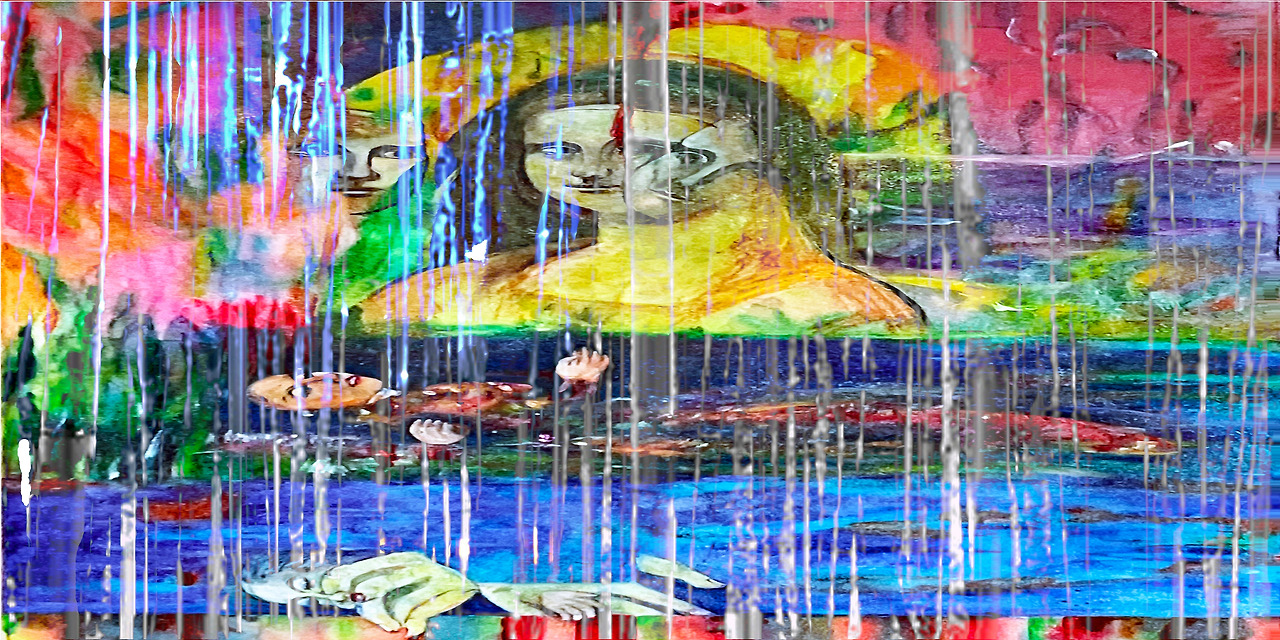
Desire Concept Realistic Abstract Work: Louis Choi Chul-joo, bamboo forest 269-a portrait of a mirror reflecting its desire on the window, a hand-painted picture on a computer: By repeatedly applying the concept of imaginary world and desire and Choi Chul-joo's desire formula <D(I...I')d=I(D...D'i)i> to the image of the work, it acquires aesthetic value and reveals its meaning by realizing formability in the shadow of reversible light. / The meaning of the shape, which is covered by the actual changed instantaneous movement of the shape, results in linguistic abstraction. In other words, the realistic shape of the other person's desire in a momentary event is a linguistic abstraction of the same meaning. Conceptual art with morning glory and bamboo as cultural background is linguistic abstraction. The abstract creates a conceptual structure based on the shape of subsequent reality fostered by language and hides the desire of others in a momentary event.
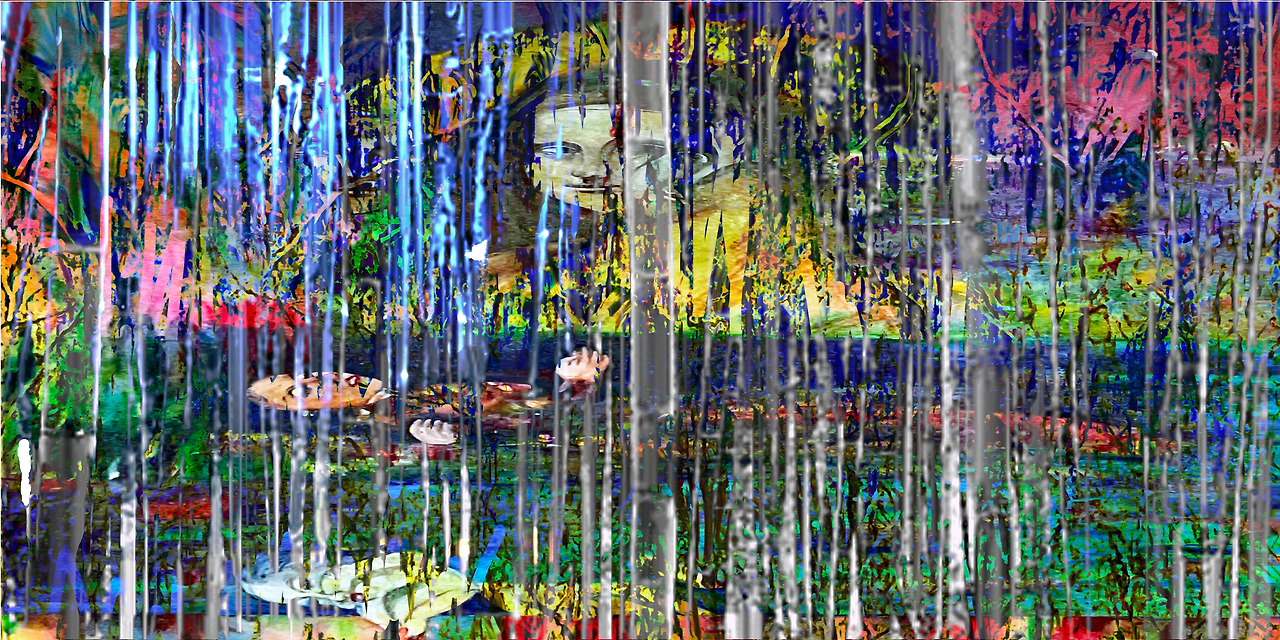
Desire Concept Realistic Abstract Work: Louis Choi chuljoo, bamboo forest j269-a portrait of a mirror reflecting its desire on the window: By repeatedly applying the concept of imaginary world and desire and Choi Chul-joo's desire formula <D(I...I')d=I(D...D'i)i> to the image of the work, it acquires aesthetic value and reveals its meaning by realizing formability in the shadow of reversible light. / The meaning of the shape, which is covered by the actual changed instantaneous movement of the shape, results in linguistic abstraction. In other words, the realistic shape of the other person's desire in a momentary event is a linguistic abstraction of the same meaning. Conceptual art with morning glory and bamboo as cultural background is linguistic abstraction. The abstract creates a conceptual structure based on the shape of subsequent reality fostered by language and hides the desire of others in a momentary event.
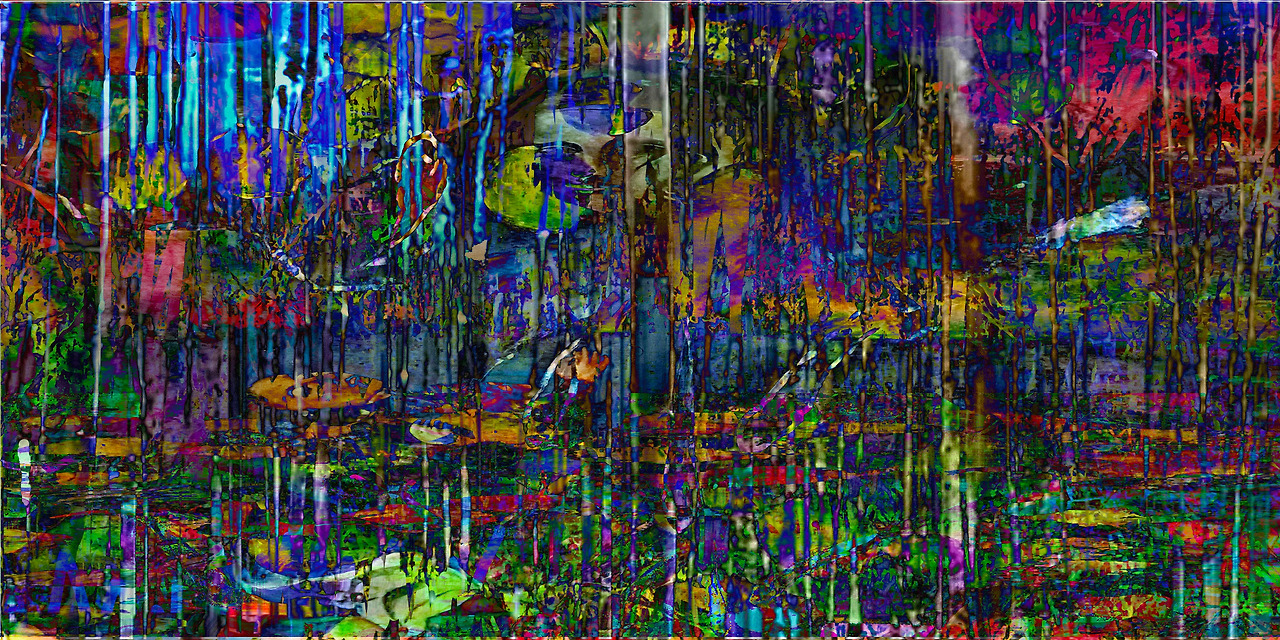
The visualization of the concept of desire: Louis Choi chuljoo, ba-pondmboo forest j269-a portrait of a mirror reflecting its desire on the window-pond: Visualizing the concept of desire is a cartoon depicting events and performances manually, expressing the background of the cartoon as a landscape of desire with "Bamboo Forest," and the cartoon image reconstructs desire into an abstract and realistic picture.
Desire Design Methodology in Abstract Art Theory on Painting Design, Contemporary Artist Choi Chul-joo's Desire Concept Abstract Design Methodology: <bamboo forest j269-a portrait of a mirror reflecting its desire on the window> As an Abstract Korean painting of Modern Art, Desire Formula <D(I...I')d=I(D...D'i)i> is applied to overlap the painting <2024 U.S. presidential candidate> created by reversible light. In addition, by re-applying the desire formula by linking verbal metaphor images, a phenomenal conceptual place is set in another place in one space as a shade of reversible light and abstracted.
This translates to the first non-realistic abstraction poster at Louis Choi Chul-joo's 2022 New York Exhibition to actualize the Desire Object. The image <bamboo forest d204-pond-2024 U.S. presidential candidate> becomes a non-real abstraction of reality.
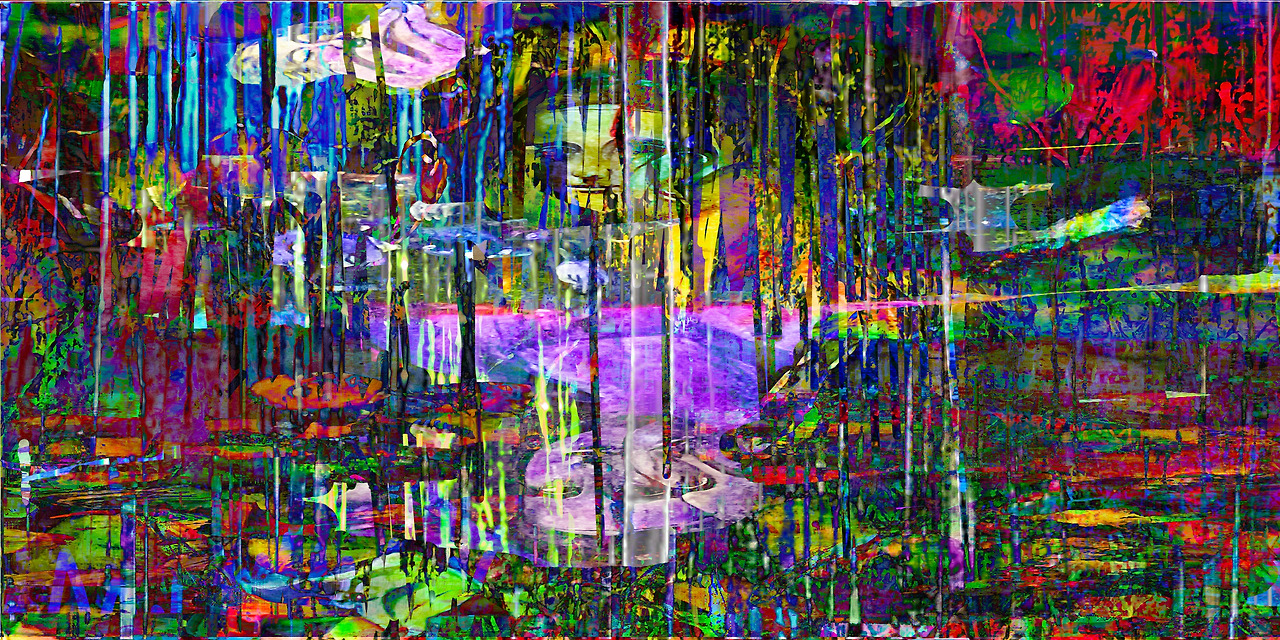
Desire Concept Realistic Abstract Work: Louis Choi chuljoo, bamboo forest j269-a portrait of a mirror reflecting its desire on the window-pond-mirror: By repeatedly applying the concept of imaginary world and desire and Choi Chul-joo's desire formula <D(I...I')d=I(D...D'i)i> to the image of the work, it acquires aesthetic value and reveals its meaning by realizing formability in the shadow of reversible light. / The meaning of the shape, which is covered by the actual changed instantaneous movement of the shape, results in linguistic abstraction. In other words, the realistic shape of the other person's desire in a momentary event is a linguistic abstraction of the same meaning. Conceptual art with morning glory and bamboo as cultural background is linguistic abstraction. The abstract creates a conceptual structure based on the shape of subsequent reality fostered by language and hides the desire of others in a momentary event.

Desire Concept Realistic Abstract Work: Louis Choi chuljoo, morning glory p138-4-Like the movie Ophelia, false love and war between countries end their deaths: By repeatedly applying the concept of imaginary world and desire and Choi Chul-joo's 3formula <D(I...I')d=I(D...D'i)i> to the image of the work, it acquires aesthetic value and reveals its meaning by realizing formability in the shadow of reversible light. / The meaning of the shape, which is covered by the actual changed instantaneous movement of the shape, results in linguistic abstraction. In other words, the realistic shape of the other person's desire in a momentary event is a linguistic abstraction of the same meaning. Conceptual art with morning glory and bamboo as cultural background is linguistic abstraction. The abstract creates a conceptual structure based on the shape of subsequent reality fostered by language and hides the desire of others in a momentary event.
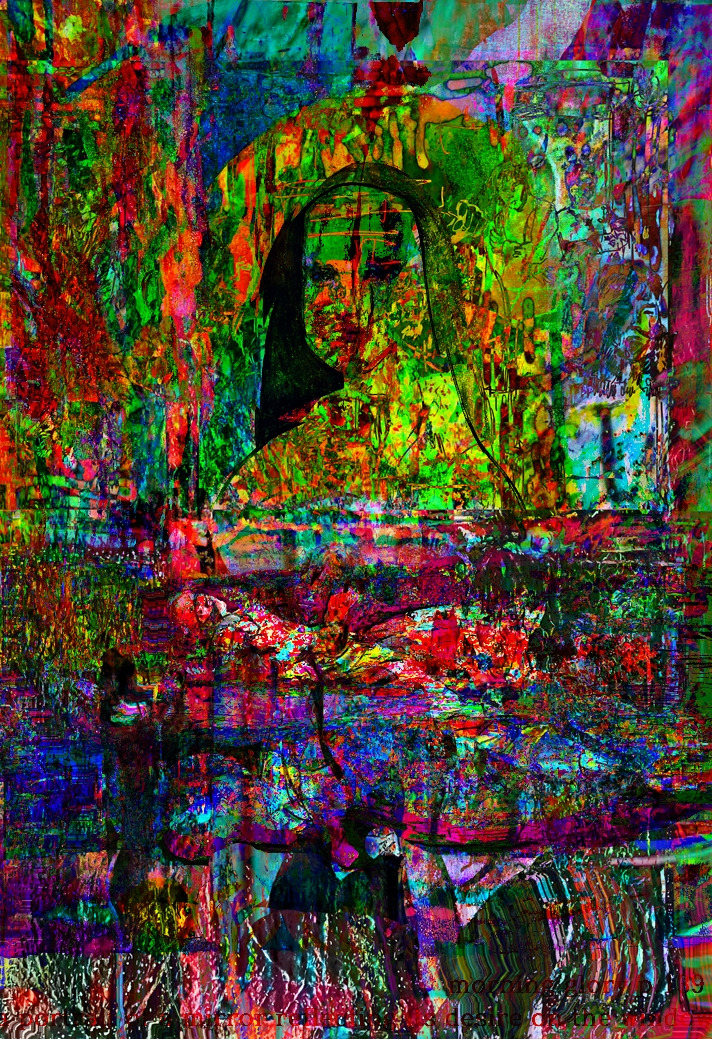
Louis Choi Chul-joo, morning glory p139-1-a portrait of a mirror reflecting its desire on the window, a hand-painted picture on a computer
Cartoonist Choi Chul-joo's Desire Conceptual Art Cartoon abstraction as a cartoonist means abstracting the conceptual image of desire in art into a realistic structure. Since the conceptual meaning of desire that exists instead of a realistic form can be divided into cartoon criticism images, poster abstraction that designates specific places is drawn through reversible contrast that interprets images of events and performances as images of abstract desires of others.
Choi Chul-joo cartoon review and abstraction "morning glory", which use modern art poster abstraction as desire conceptual art, abstracts the image of the concept of desire by reinterpreting it as a concept of cartoon.
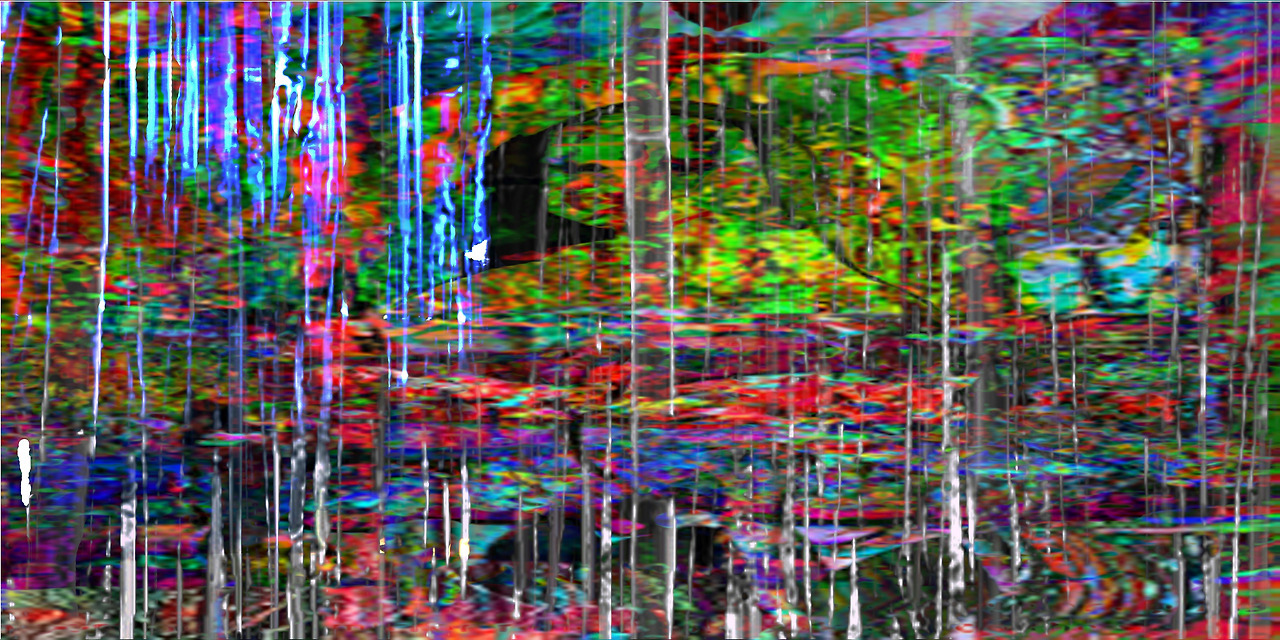
Desire Concept Realistic Abstract Work: Louis Choi Chul-joo, bamboo forest 267-a portrait of a mirror reflecting its desire on the window, a hand-painted picture on a computer: By repeatedly applying the concept of imaginary world and desire and Choi Chul-joo's desire formula <D(I...I')d=I(D...D'i)i> to the image of the work, it acquires aesthetic value and reveals its meaning by realizing formability in the shadow of reversible light. / The meaning of the shape, which is covered by the actual changed instantaneous move
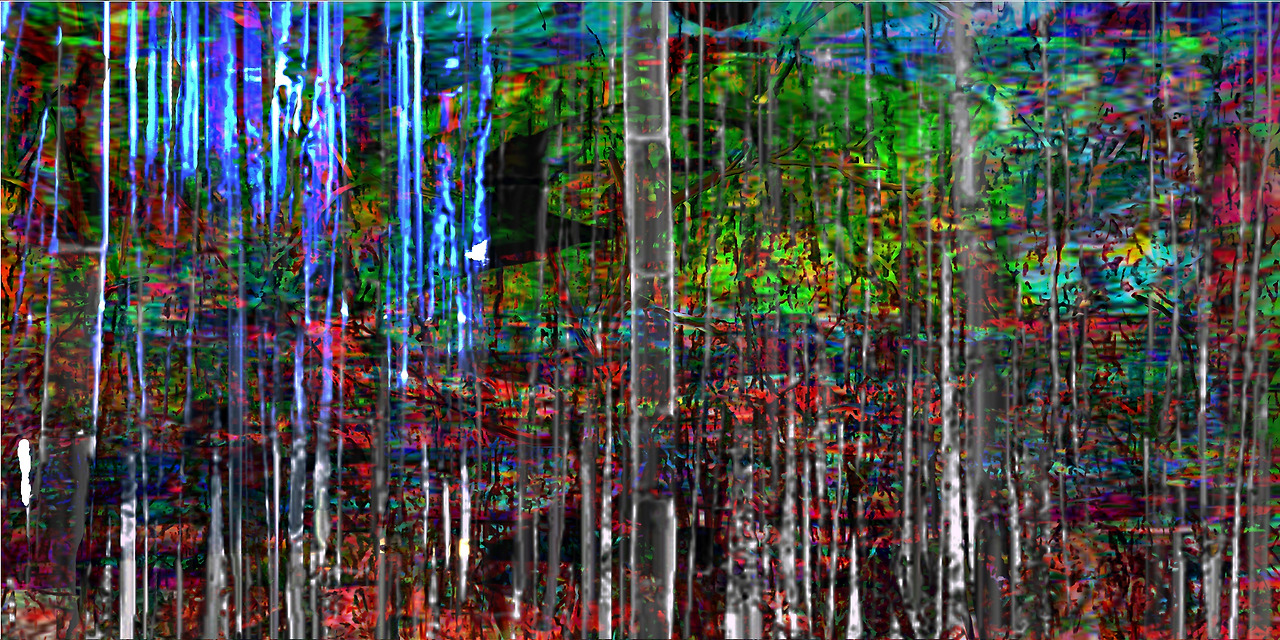
Desire Concept Realistic Abstract Work: Louis Choi Chul-joo, bamboo forest i267-a portrait of a mirror reflecting its desire on the window, a hand-painted picture on a computer: By repeatedly applying the concept of imaginary world and desire and Choi Chul-joo's desire formula <D(I...I')d=I(D...D'i)i> to the image of the work, it acquires aesthetic value and reveals its meaning by realizing formability in the shadow of reversible light. / The meaning of the shape, which is covered by the actual changed instantaneous movement of the shape, results in linguistic abstraction. In other words, the realistic shape of the other person's desire in a momentary event is a linguistic abstraction of the same meaning. Conceptual art with morning glory and bamboo as cultural background is linguistic abstraction. The abstract creates a conceptual structure based on the shape of subsequent reality fostered by language and hides the desire of others in a momentary event.
■ Choi Chul-joo's concept of desire design process "morning glory" by Choi Chul-joo is a reconstruction of the imagination of desire that is recognized as a structure of desire and the reality reflected in the mirror as a background of desire established as a visual structure. "Bamboo Forest" is the shadow that hides the reality in the shadow of reversible light in his desire concept design process. And "The Missing Pond" is an abstract language image that reflects the reality of the concept of unconscious desire as a linguistic structure.
Therefore, Choi Chul-joo's concept of desire visualizes the concept of desire as a linguistic representation of the "disappeared pond" structure of symbolic reality, reducing the concept of abstract desire to a real image in the category of modern art's ideal Logos expression.
The progress of this symbolizes the object of desire as a conceptual subject as a design process of the conceptual subject of desire.
Choi Chul-joo's concept of desire to design abstraction in contemporary art does not presuppose causality with the real image, but symbolizes the object of desire as a conceptual subject from an abstract concept in which desires alienated by the unconscious are divided, resulting in an abstract real image as a correlation between real images.
In linguistic abstraction, the meaning of abstraction as a real image is inductively inferred to take the meaning of symbolic existence.
And the view of the image of its existence abstracts the concept of desire to the outside of reality, and the real image becomes the object of abstraction as the correlation of reality with the concept of desire. This is Choi Chul-joo's concept of desire design process 1.
The actual image symbolized by the design using the object of abstract desire as the conceptual subject is omitted, and the image is flattened in the visible range of light. And the image is represented as a symbolic structure of the concept of desire, which is spoken in a linguistic sense.
Choi Chul-joo's concept of desire design process 2 is to decorate the object with a color of universal reality that matches customs so that the reality of the symbolic structure represented in this way has an aesthetic value corresponding to the place as a single image.
The aesthetic structure concealed by the image designed as the concept of desire is divided into clouds and obscured shades, and the concept of desire is visualized as an image in various directions in the opposite direction of the concept of desire and the image, and the subject of the structure of desire created in the social environment is represented as an object in the past to recognize the image as an abstraction. And the subject who drew the existence executes the reality that symbolizes the concept of desire as an agent, and turns abstract desire into an image's mental phenomenon.
And Choi Chul-joo's abstract concept of desire is created by the imagination desired by the subject of desire in selecting an image of an abstract desire object in the unconscious.
As an abstract image, the concept of desire design process 3 is to repeatedly design a desire that combines lines and colors as an unconscious act that is in thought but is not conscious.
The concept of unconsciously abstracting desire is a sculpture image of reality in which the object of reality is not seen as a reversible shadow of light, and shows another image of reality by concealing reality as a shadow.
The image is an unconscious mind maintained by the real image and the imagination desired by the subject of desire, and is an idea that cannot be recognized by that image.
Desire Concept Design Process 4. is designed by combining the spatial composition of desire, in which the image of desire is a sculpted planar monochromatic painting in reality, into a reversible structure of light through conscious movement.
In this way, Choi Cheol-joo's concept of desire design appears as an object of desire as another abstract reality in the perspective visual system through his concept of desire design process.

The visualization of the concept of desire: Louis Choi chuljoo, ba-pondmboo forest i267-a portrait of a mirror reflecting its desire on the window-pond: Visualizing the concept of desire is a cartoon depicting events and performances manually, expressing the background of the cartoon as a landscape of desire with "Bamboo Forest," and the cartoon image reconstructs desire into an abstract and realistic picture./ The meaning of the shape, which is covered by the actual changed instantaneous movement of the shape, results in linguistic abstraction. In other words, the realistic shape of the other person's desire in a momentary event is a linguistic abstraction of the same meaning. Conceptual art with morning glory and bamboo as cultural background is linguistic abstraction. The abstract creates a conceptual structure based on the shape of subsequent reality fostered by language and hides the desire of others in a momentary event.
Desire Design Methodology in Abstract Art Theory on Painting Design, Contemporary Artist Choi Chul-joo's Desire Concept Abstract Design Methodology: <bamboo forest i267-a portrait of a mirror reflecting its desire on the window> As an Abstract Korean painting of Modern Art, Desire Formula <D(I...I')d=I(D...D'i)i> is applied to overlap the painting <2024 U.S. presidential candidate> created by reversible light. In addition, by re-applying the desire formula by linking verbal metaphor images, a phenomenal conceptual place is set in another place in one space as a shade of reversible light and abstracted.
This translates to the first non-realistic abstraction poster at Louis Choi Chul-joo's 2022 New York Exhibition to actualize the Desire Object. The image <bamboo forest d204-pond-2024 U.S. presidential candidate> becomes a non-real abstraction of reality.
By repeatedly applying the concept of imaginary world and desire and Choi Chul-joo's desire formula <D(I...I')d=I(D...D'i)i> to the image of the work, it acquires aesthetic value and reveals its meaning by realizing formability in the shadow of reversible light. / The meaning of the shape, which is covered by the actual changed instantaneous movement of the shape, results in linguistic abstraction. In other words, the realistic shape of the other person's desire in a momentary event is a linguistic abstraction of the same meaning. Conceptual art with morning glory and bamboo as cultural background is linguistic abstraction. The abstract creates a conceptual structure based on the shape of subsequent reality fostered by language and hides the desire of others in a momentary event.
■ Choi Chul-joo's concept of desire design process "morning glory" by Choi Chul-joo is a reconstruction of the imagination of desire that is recognized as a structure of desire and the reality reflected in the mirror as a background of desire established as a visual structure. "Bamboo Forest" is the shadow that hides the reality in the shadow of reversible light in his desire concept design process. And "The Missing Pond" is an abstract language image that reflects the reality of the concept of unconscious desire as a linguistic structure.
Therefore, Choi Chul-joo's concept of desire visualizes the concept of desire as a linguistic representation of the "disappeared pond" structure of symbolic reality, reducing the concept of abstract desire to a real image in the category of modern art's ideal Logos expression.
The progress of this symbolizes the object of desire as a conceptual subject as a design process of the conceptual subject of desire.
Choi Chul-joo's concept of desire to design abstraction in contemporary art does not presuppose causality with the real image, but symbolizes the object of desire as a conceptual subject from an abstract concept in which desires alienated by the unconscious are divided, resulting in an abstract real image as a correlation between real images.
In linguistic abstraction, the meaning of abstraction as a real image is inductively inferred to take the meaning of symbolic existence.
And the view of the image of its existence abstracts the concept of desire to the outside of reality, and the real image becomes the object of abstraction as the correlation of reality with the concept of desire. This is Choi Chul-joo's concept of desire design process 1.
The actual image symbolized by the design using the object of abstract desire as the conceptual subject is omitted, and the image is flattened in the visible range of light. And the image is represented as a symbolic structure of the concept of desire, which is spoken in a linguistic sense.
Choi Chul-joo's concept of desire design process 2 is to decorate the object with a color of universal reality that matches customs so that the reality of the symbolic structure represented in this way has an aesthetic value corresponding to the place as a single image.
The aesthetic structure concealed by the image designed as the concept of desire is divided into clouds and obscured shades, and the concept of desire is visualized as an image in various directions in the opposite direction of the concept of desire and the image, and the subject of the structure of desire created in the social environment is represented as an object in the past to recognize the image as an abstraction. And the subject who drew the existence executes the reality that symbolizes the concept of desire as an agent, and turns abstract desire into an image's mental phenomenon.
And Choi Chul-joo's abstract concept of desire is created by the imagination desired by the subject of desire in selecting an image of an abstract desire object in the unconscious.
As an abstract image, the concept of desire design process 3 is to repeatedly design a desire that combines lines and colors as an unconscious act that is in thought but is not conscious.
The concept of unconsciously abstracting desire is a sculpture image of reality in which the object of reality is not seen as a reversible shadow of light, and shows another image of reality by concealing reality as a shadow.
The image is an unconscious mind maintained by the real image and the imagination desired by the subject of desire, and is an idea that cannot be recognized by that image.
Desire Concept Design Process 4. is designed by combining the spatial composition of desire, in which the image of desire is a sculpted planar monochromatic painting in reality, into a reversible structure of light through conscious movement.
In this way, Choi Cheol-joo's concept of desire design appears as an object of desire as another abstract reality in the perspective visual system through his concept of desire design process.
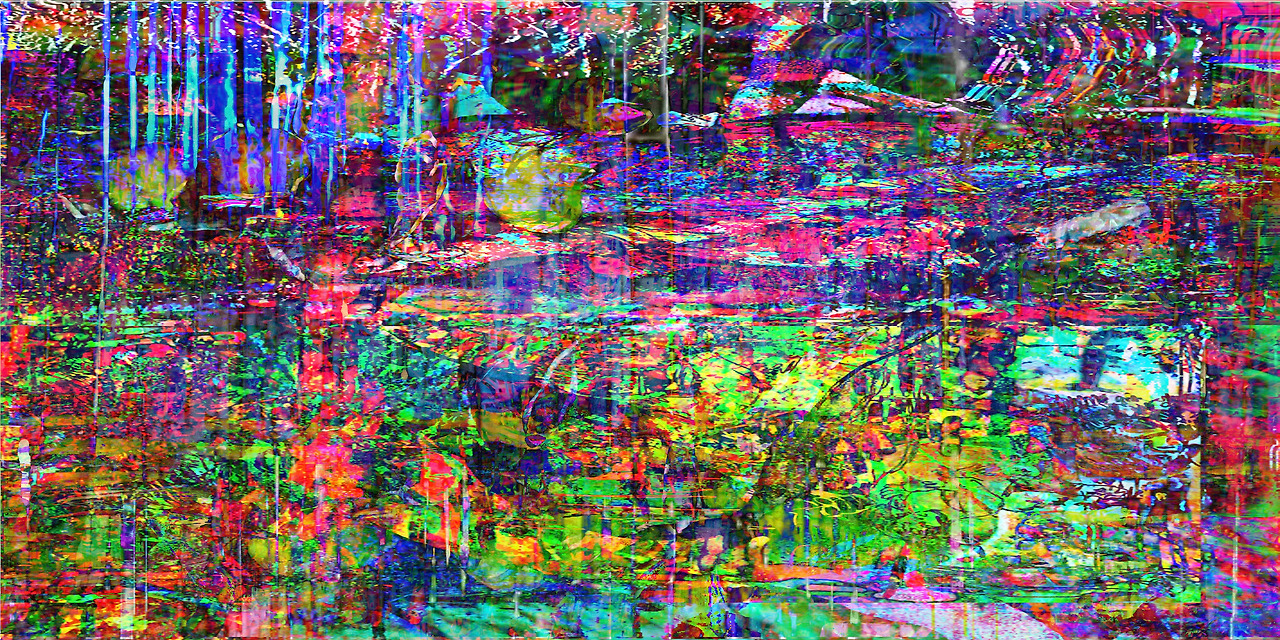
Desire Concept Realistic Abstract Work: Louis Choi chuljoo, bamboo forest i267-a portrait of a mirror reflecting its desire on the window-pond-mirror: By repeatedly applying the concept of imaginary world and desire and Choi Chul-joo's desire formula <D(I...I')d=I(D...D'i)i> to the image of the work, it acquires aesthetic value and reveals its meaning by realizing formability in the shadow of reversible light. / The meaning of the shape, which is covered by the actual changed instantaneous movement of the shape, results in linguistic abstraction. In other words, the realistic shape of the other person's desire in a momentary event is a linguistic abstraction of the same meaning. Conceptual art with morning glory and bamboo as cultural background is linguistic abstraction. The abstract creates a conceptual structure based on the shape of subsequent reality fostered by language and hides the desire of others in a momentary event.
The visualization of the concept of desire: Visualizing the concept of desire is a cartoon depicting events and performances manually, expressing the background of the cartoon as a landscape of desire with "Bamboo Forest," and the cartoon image reconstructs desire into an abstract and realistic picture.
Desire Design Methodology in Abstract Art Theory on Painting Design, Contemporary Artist Choi Chul-joo's Desire Concept Abstract Design Methodology: < > As an Abstract Korean painting of Modern Art, Desire Formula <D(I...I')d=I(D...D'i)i> is applied to overlap the painting < Louis Choi Chul-joo, morning glory p139-1-a portrait of a mirror reflecting its desire on the window, a hand-painted picture on a computer> created by reversible light.
Therefore, conceptual abstract painter Louis Choi Chul-joo's "bamboo forest i267-a portrait of a mirror reflecting its desire on the window" is a desire image of a real structure that is reconstructed into a reversible structure of light as an image of the concept of desire
By repeatedly applying the concept of imaginary world and desire and Choi Chul-joo's desire formula <D(I...I')d=I(D...D'i)i> to the image of the work, it acquires aesthetic value and reveals its meaning by realizing formability in the shadow of reversible light. / The meaning of the shape, which is covered by the actual changed instantaneous movement of the shape, results in linguistic abstraction. In other words, the realistic shape of the other person's desire in a momentary event is a linguistic abstraction of the same meaning. Conceptual art with morning glory and bamboo as cultural background is linguistic abstraction. The abstract creates a conceptual structure based on the shape of subsequent reality fostered by language and hides the desire of others in a momentary event.
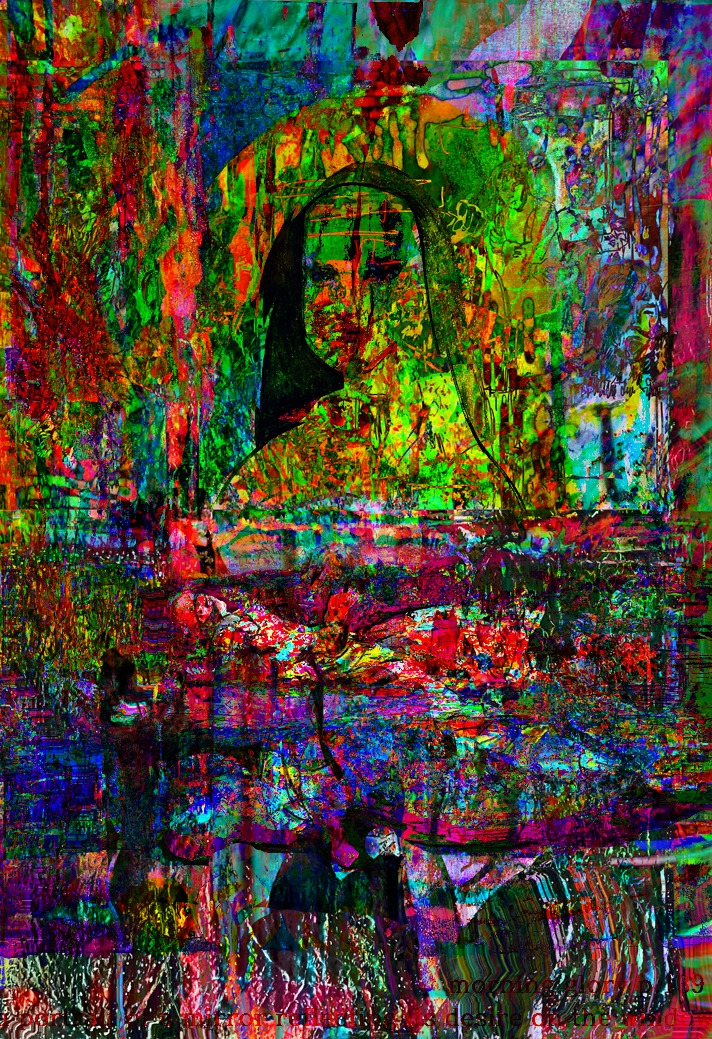
Desire Concept Realistic Abstract Work: Louis Choi Chul-joo, morning glory p139-1-a portrait of a mirror reflecting its desire on the window, a hand-painted picture on a computer : By repeatedly applying the concept of imaginary world and desire and Choi Chul-joo's 3formula <D(I...I')d=I(D...D'i)i> to the image of the work, it acquires aesthetic value and reveals its meaning by realizing formability in the shadow of reversible light. / The meaning of the shape, which is covered by the actual changed instantaneous movement of the shape, results in linguistic abstraction. In other words, the realistic shape of the other person's desire in a momentary event is a linguistic abstraction of the same meaning. Conceptual art with morning glory and bamboo as cultural background is linguistic abstraction. The abstract creates a conceptual structure based on the shape of subsequent reality fostered by language and hides the desire of others in a momentary event.
By repeatedly sketching design and applying Choi Chuljoo's desire formula "D(I...I')d=I(D...D'i)i" to the conceptual image of desire, it instantly acquires aesthetic value and reveals the meaning of abstract desire by realizing realistic formability in the shadow of reversible light at that moment. / The abstract meaning of the shape in which the actual changed instantaneous desire shape is hidden by the reversible movement of light results in linguistic abstraction. In other words, it is verbal abstraction with the same meaning as a realistic form of the other person's desire in a momentary event or performance scene. Choi Chul-joo's conceptual art with morning glory and bamboo as the background of cultural abstraction is the linguistic abstraction of images. The abstraction creates a conceptual structure based on the shape of reality after the meaning fostered by language and hides the abstract desire of others in momentary events and performance scenes.
Louis Choi Chul-joo,"morning glory p139-1-a portrait of a mirror reflecting its desire on the window," is a desire image of a real structure that is reconstructed into a reversible structure of light as an image of the concept of desire created from a transformed image meaning the reality of morning glory.
Conceptual Abstract Painter Louis Choi Chul-joo's work "bamboo forest i267-a portrait of a mirror reflecting its desire on the window-pond-mirror" rather than campaign broadcasts through YouTube-pond-mirror" is an abstract reality image that reconstructs the structure of desire created through an aesthetic grammatical structure into a linguistic sense.
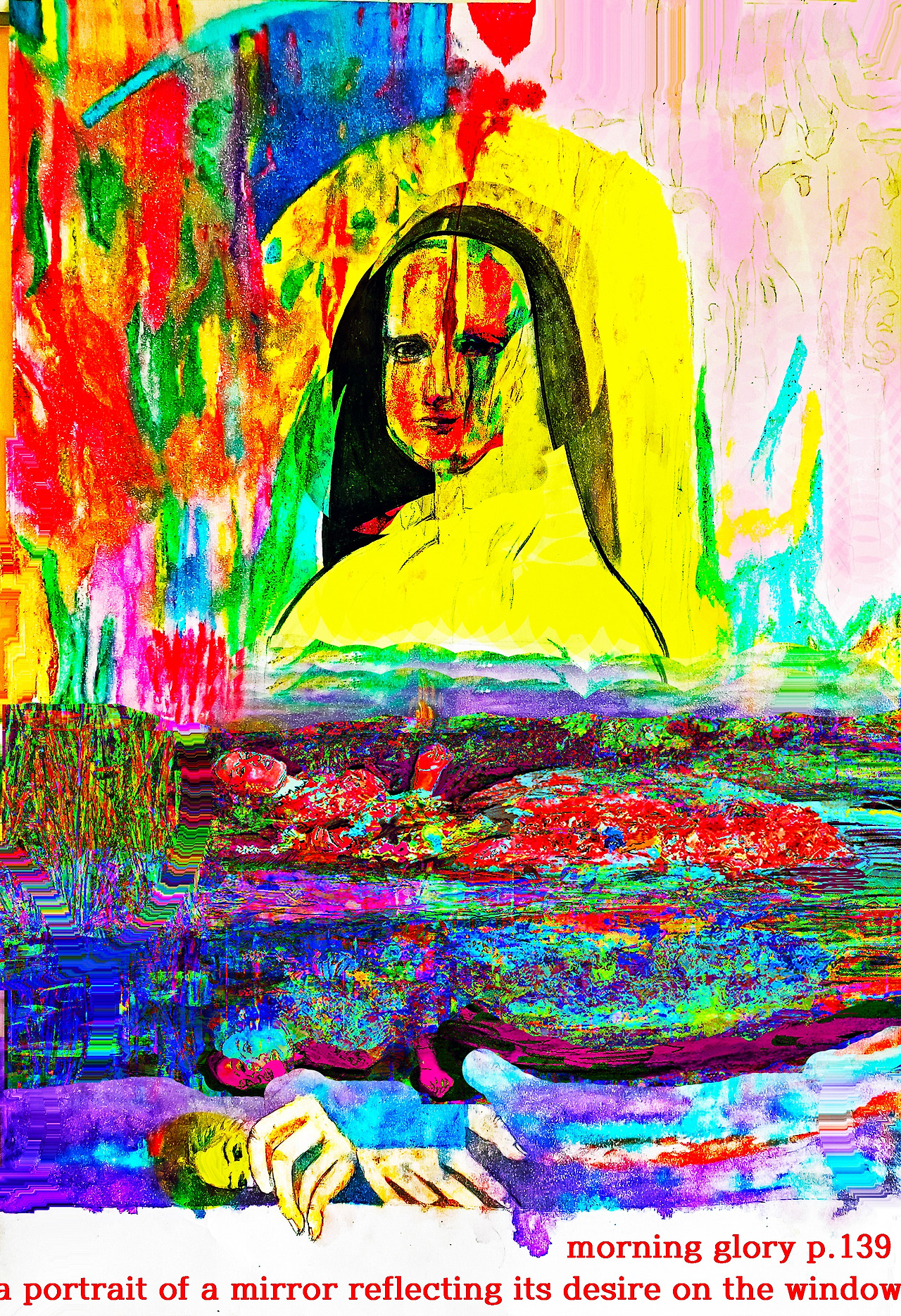
Louis Choi chuljoo, morning glory p139-a portrait of a mirror reflecting its desire on the window, a hand-painted picture on a computer
Desire Concept Realistic Abstract Work: Louis Choi chuljoo, morning glory p139-a portrait of a mirror reflecting its desire on the window: By repeatedly applying the concept of imaginary world and desire and Choi Chul-joo's desire formula <D(I...I')d=I(D...D'i)i> to the image of the work, it acquires aesthetic value and reveals its meaning by realizing formability in the shadow of reversible light. / The meaning of the shape, which is covered by the actual changed instantaneous movement of the shape, leads to verbal abstraction. In other words, the shape in which the other's desire is realistically revealed in a momentary event is a linguistic abstraction with the same meaning. Conceptual art with morning glory and bamboo as a cultural background is linguistic abstraction. Abstraction creates a conceptual structure reflected in a pond based on the shape of subsequent reality fostered by language and hides the desires of others in instantaneous events.And Choi Chul-joo's concept of desire visualizes the concept of desire as a linguistic expression for "morning glory" reflected in the "pond" structure of symbolic reality, reducing the abstract concept of desire to a real image in the category of ideal desire expression in contemporary art.
In addition, as a process of designing the concept of desire, the object of desire is symbolized as a conceptual subject, forming a reality expressed through desire revealed in the oppressed unconscious through design and revealing abstraction as existence
The visualization of the concept of desire: Conceptual Visualization of Desire is a cartoon abstraction that describes events and performances as a concept of desire, which expresses the image of events as a desire background "morning glory" and "Bamboo Forest" as the background of the cartoon, and reconstructs the cartoon image as a realistic picture by moving it from the concept of abstract desire to the desire background "morning glory" and "Bamboo Forest," which are the subjects of desire.

Louis Choi Chul-joo, a portrait of a mirror reflecting its desire on the window, 113X165cm, acrylic and composite materials on cloth, 2025
Contemporary Artist Choi Chul-joo's Desire Concept Abstract Design Methodology: <morning glory p139-a portrait of a mirror reflecting its desire on the window, a hand-painted picture on a computer> As an Abstract Korean painting of Modern Art, Desire Formula <D(I...I')d=I(D...D'i)i> is applied to overlap the painting <Louis Choi Chul-joo, a portrait of a mirror reflecting its desire on the window, 113X165cm, acrylic and composite materials on cloth, 2025> created by reversible light. In addition, by re-applying the desire formula by linking verbal metaphor images, a phenomenal conceptual place is set in another place in one space as a shade of reversible light and abstracted.
This translates to the first non-realistic abstraction poster at Louis Choi Chul-joo's 2022 New York Exhibition to actualize the Desire Object. The image <Louis Choi chuljoo, morning glory p140-2-a portrait of a mirror reflecting its desire on the window, a hand-painted picture on a computer> becomes a non-real abstraction of reality.
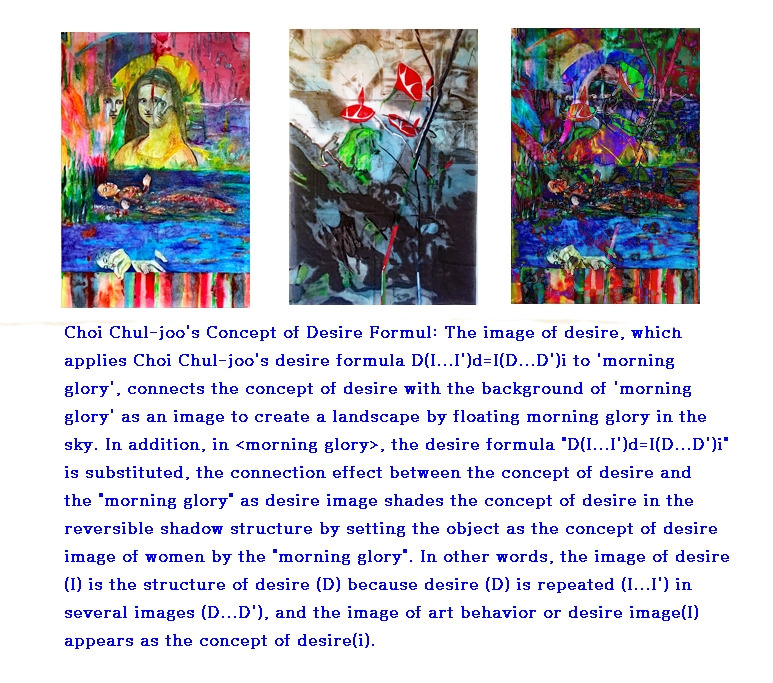
By repeatedly applying the concept of imaginary world and desire and Choi Chul-joo's desire formula <D(I...I')d=I(D...D'i)i> to the image of the work, it acquires aesthetic value and reveals its meaning by realizing formability in the shadow of reversible light. / The meaning of the shape, which is covered by the actual changed instantaneous movement of the shape, results in linguistic abstraction. In other words, the realistic shape of the other person's desire in a momentary event is a linguistic abstraction of the same meaning. Conceptual art with morning glory and bamboo as cultural background is linguistic abstraction. The abstract creates a conceptual structure based on the shape of subsequent reality fostered by language and hides the desire of others in a momentary event.

Louis Choi chuljoo, morning glory p140-2-a portrait of a mirror reflecting its desire on the window, a hand-painted picture on a computer
By repeatedly sketching design and applying Choi Chuljoo's desire formula "D(I...I')d=I(D...D'i)i" to the conceptual image of desire, it instantly acquires aesthetic value and reveals the meaning of abstract desire by realizing realistic formability in the shadow of reversible light at that moment. / The abstract meaning of the shape in which the actual changed instantaneous desire shape is hidden by the reversible movement of light results in linguistic abstraction. In other words, it is verbal abstraction with the same meaning as a realistic form of the other person's desire in a momentary event or performance scene. Choi Chul-joo's conceptual art with morning glory and bamboo as the background of cultural abstraction is the linguistic abstraction of images. The abstraction creates a conceptual structure based on the shape of reality after the meaning fostered by language and hides the abstract desire of others in momentary events and performance scenes.
Therefore, conceptual abstract painter Louis Choi Chul-joo's "morning glory p139-a portrait of a mirror reflecting its desire on the window" is a desire image of a real structure that is reconstructed into a reversible structure of light as an image of the concept of desire created from a transformed image meaning the reality of morning glory.a New Yorker's private collection
Therefore, conceptual abstract painter Louis Choi Chul-joo's "morning glory p140-2-a portrait of a mirror reflecting its desire on the window" is a desire image of a real structure that is reconstructed into a reversible structure of light as an image of the concept of desire created from a transformed image meaning the reality of morning glory
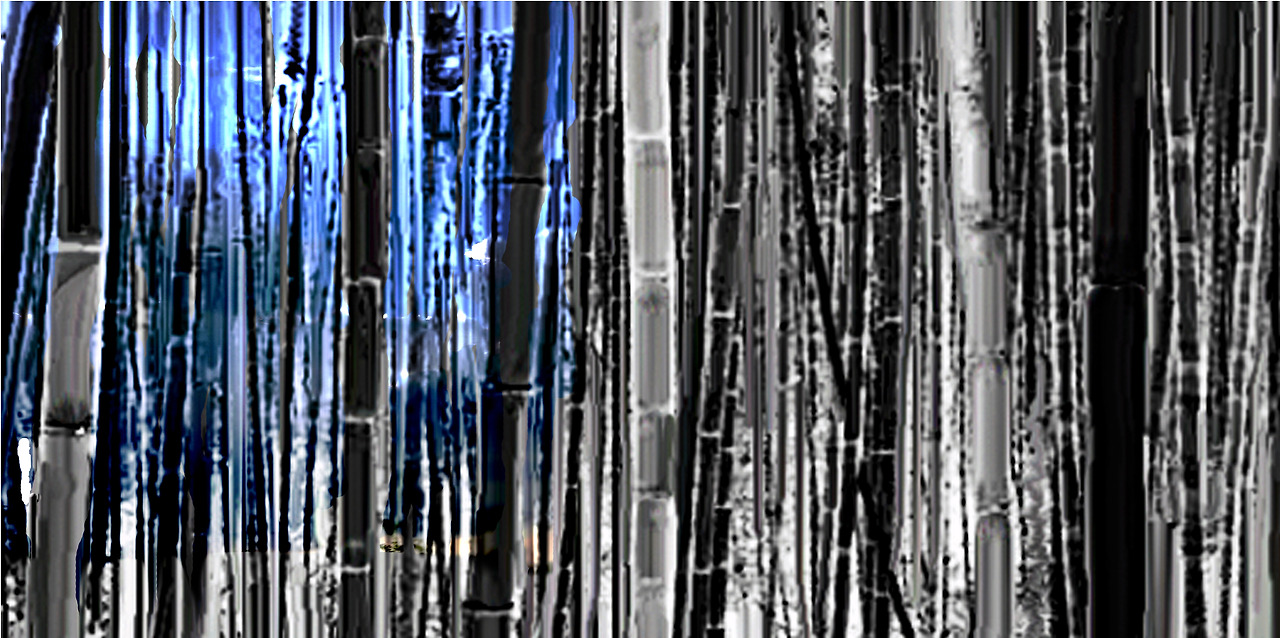
Background image of an artist's artwork: Louis Choi Chul-joo, the bamboo forest 269, a hand-painted picture on a computer

Desire Concept Realistic Abstract Work: Louis Choi chuljoo, bamboo forest j269-a portrait of a mirror reflecting its desire on the window-pond-mirror: [The interpretation of words in a cartoon news ː l’interprétation du mot dans une nouvelle caricature] Choi Chul-joo, a current affairs critic, was a reporter at the Ministry of Culture of the News Busan Internet Newspaper. He is a cultural design critic and abstract artist who paints Current affairs cartoon cartoons News and abstract paintings in contemporary :art works and webtoons. ■ Choi Chul-joo's concept of desire, "morning glory," conflicts with linguistic concepts of meaning emphasized from a metaphysical philosophical point of view, creating dramatic event images to express the subject of insufficient desire, and illuminating the image in reversible shades of white light. He reflects the linguistic grammatical meaning of abstract desire concepts as images to form spaces of multiple event images that share superimposed temporality and reversible white light shades. This is interpreted as the subject of the absence of desire beyond the abstract self of the desire of others rather than physical perception, unlike the materialism of painting in the 18th century. The linguistic grammatical meaning of abstract desire concepts is a dualistic object that regards real images as events, equating the structure of insufficient desire with the principle of spatial composition. And as reversible light at the point of light over time, the material is made into a real image as an object. Thus, the concept of abstract desire in a pond that reflects the image of an event is expressed as a real image that reflects the desires of others in the real world. ■ Choi Chul-joo's Concept of Desire Formula: In the concept of Choi Chul-joo's desire, mathematical desire as an axiom of logic in the concept of desire results in reality as a concrete phenomenon rather than based on the external structure of the linguistic meaning through abstract design. Therefore, the rendering of the desire structure revealed by abstract encounter with reality at the intersection of desire outside the window applies the mathematical desire concept abstract design, or the image of the desire concept, to the Choi Chul-joo desire formula, and on March 1, 2022, morning glory appears as a flat real image as the subject of desire as a reversible shade of light in the Flushing Town Hall (New York) exhibition./ The image of desire, which applies Choi Chul-joo's desire formula D(I...I')d=I(D...D')i to 'morning glory', connects the concept of desire with the background of 'morning glory' as an image to create a landscape by floating morning glory in the sky. In addition, in <morning glory>, the desire formula "D(I...I')d=I(D...D')i" is substituted, the connection effect between the concept of desire and the "morning glory" as desire image shades the concept of desire in the reversible shadow structure by setting the object as the concept of desire image of women by the "morning glory". In other words, the image of desire (I) is the structure of desire (D) because desire (D) is repeated (I...I') in several images (D...D'), and the image of art behavior or desire image(I) appears as the concept of desire(i). ■ Choi Chul-joo's Desire The design process of abstract concepts: 1. The concept of desire is abstracted from the perspective of an image to the outside of reality, and the image of reality as an object of abstraction is designed as the correlation between reality and reality. This is the design process 1 of Choi Chul-joo's concept of abstraction of desire. This does not presuppose a causal relationship with the real world, but rather results in an abstract concept of desire as a correlation with reality to escape the misunderstanding that transfers from an abstract concept to a real structure. 2. The scope of showing the concept of desire is created and located by omitting the actual size of the abstract concept as a shade of the concept of desire originating from the actual image. In addition, Choi Chul-joo's conceptual process 2 follows the process of decorating an object with a color of universal reality suitable for custom in order to have aesthetic value suitable for its position as a single image. This creates an abstraction that contrasts with the past and desire, in which the aesthetic structure hidden by realistic colors is divided by clouds and obscured by shaded light, obscuring the abstract concept in the actual image. 3. The subject who painted abstraction realizes the reality that symbolizes the concept of desire, and the unconscious realizes abstract desire as a conscious phenomenon of image. Desire is an abstract image realized as a conscious phenomenon of an image, and the unconscious structure is process 3 of designing an abstract art concept of desire that repeatedly designs desire that combines line and color in thoughts but is not conscious of unconscious behavior. 4. The unconsciously abstracted concept of desire is a piece of reality in which the object of reality is not seen as a reversible shade of light, concealing reality as a shadow and showing another real image as a video. This is the process 4 of designing an abstract concept of desire formed by combining the space of desire into a reversible light structure through the conscious movement of planar monochromatic painting carved into reality. ■ The Design Results of Choi Chul-joo's Desire Abstract Concept: Choi Chul-joo Desire Abstract Concept Design's Linguistic Meaning Results: Although the object that is obsessed with the desire for others is passive, it is possible to actively practice one's desires through the sympathizer as the subject of desire, and the sympathizer who sympathizes with the desires of others as the subject can practice with the same desire. As a subject, a person who sympathizes with or accepts the desires of others becomes the same desire and becomes another subject of execution. Here, the sympathizer who sympathizes with the subject of the other's desire tries to generalize it as another object of desire that acts like a victor of war. However, when desire as an act overshadowed by reversible light is not generalized as a public act, the subject of inappropriate desire and the sympathizer antagonize the subject who practiced it according to the other's general desire. ■ Object rendering of the concept of desire is 1. a pop art image that renders unconscious desire as an existential reality by dividing the same concept of desire as the event image into unconscious and real images as an object. Therefore, the subject who speaks linguistic meaning actually represents abstraction, the truth value of the concept of desire, which is an expressive aesthetic structure that specifies the viewing effect of colloquial language and event video broadcasting as an act of speech enunciation that depends on the news. 2. As the truth value of the concept of desire in visual images is an open system, and numerous visual images are transmitted to others through a pluralistic visual system. Abstract images, which are the true values of the concept of desire, attract attention because they have universality as real images expressed by the desires of others. In other words, the object exposed to the abstract desires of others functions as a desire to exchange the same aesthetic image as the concept of desire of others through the diachronic function of pop art applied as a work of art. 3. The truth value of the concept of desire in a linguistic sense in which the abstract image of the concept of desire and reality are the same, represents the structure of desire, and the reality of the abstract concept of desire is a real image, which is the causal structure of desire, and creates a structure of desire by forming a semantic relationship with contradictory desire. Like Kant, this is a dual structure up to modern art, and it encompasses mythical objects in the same structure as humans, and the antinomic desire structure as a single structure. 4. an object of the concept of desire rendered in abstraction: The object rendering of the concept of desire renders the object as an event image, which is the same rational object as the linguistic meaning of the desire structure through the gaze of the rational subject, is recognized as a real image that the subject cannot see. Additionally, other objects of desire are continuously represented by real images that attempt to fill the deficiency of desire. The pond, which reflects present desire as an object to abstract desire, presents a desire structure as a reality, which is an object to abstract desire, but it returns the cause of desire as a real image to an object as an event image, free from the imperfect abstraction that lacks desire that is subjugated to social visibility that has been concealed and deviated from lack through real images. In other words, the structure of deficiency and divided desire is hidden through real images of abstract desires, and contradictory desires subordinate to deviated social visibility become the cause of desire and become the objects of real images. In addition, object rendering of other desires is continuously expressed as a real image trying to fill the deficiency of desire. The rendering of an object that reflects the present desire as an object of abstract desire presents the structure of desire as reality, which is the object of abstract desire, but it returns the cause of desire as a real image to an object as an event image, away from the imperfect abstract lacking desire. In other words, the structure of deficiency and divided desire is hidden through the real image of abstract desire, and contradictory desires subordinate to deviated social visibility become the cause of desire, resulting in abstraction as a real image. ■ the abstract design process of conceptual abstract realism: 1. Conceptual Abstract Realism The current object is illuminated with reversible light so that the illuminated form can be repeatedly visually recognized according to the past temporality to actualize the subject's structure as a shaded structure of reversible light. And the design concept that constitutes conceptual abstract realism abstraction is determined as a philosophical result that can be expected with abstract causality so that the object is repeated as a design with the present gaze so that it appears to be a realistic image according to temporality. 2. The object of conceptual abstract realism is that the absence of desire as a non-verbal meaning is alienated from the symbolic world and loses its essence as the subject of desire. In the previous stage of linguistic meaning, according to grammar revealed as a symbolic image of existence, it was separated into a realist image recognized as an abstract desire concept and divided into a realist image, and the realist image as the subject of the desire structure is linguistically and diachronically meaningful. 3. The design of a realism image is an image that lacks the linguistic meaning of conceptual abstract realism, and the image in a linguistic sense is repeatedly designed as a post-effect of the desire structure being re-embodied, and a new conceptual abstract realism image is repeatedly designed. The direction and viewpoint of reversible light that make up the image along the chain of design are all stages of the perspective visual system according to temporality, and the line space of the visual structure, in which the image in the linguistic sense constitutes the desire structure, and the reversible light that constitutes the effect of the post-image produce a realism image at the intersection of the existential place with continuity. 4. Realistic abstraction creates a multi-loyal structural image of the linguistic meaning of unconscious structure composed of shadows at multiple points of reversible light separated from perspective, and girls are abstracted as divided subjects as talents that can be stared at momentarily while dismantled at a stereoscopic single point. 5. Conceptual Abstract Realism Abstractism Rendering is a conceptual abstract realism of wanting and linguistic desires that cannot be perceived at the level of expression consciousness, visualizing philosophical psychological structures and rendering them with linguistic meaning at the intersection of conceptual abstraction and unrealistic realism. As this becomes conceptual abstract realism abstraction, unconscious desires that represent the color tone and shape of desires invisible in the shade of reversible light become maps as conceptual abstract realism abstraction.
■ conceptual abstraction rendering process: 1. Integration of linguistic meaning and visual images: The abstract concept of desire is realized when the desire of others has an aesthetic meaning by facing the linguistic meaning in the image of an event as an object of a pictorial structure reflecting the present desire, and the image in the painting is closely connected to the linguistic meaning structure. As an object representing the concept of desire, the same concept of desire as the event image is divided into unconscious and real images, and an image modeling unconscious desire as an existential real image is sketched.
As for the sketch form of the current concept of desire, the concept of absolute desire is a symbolic metaphor shown in abstraction, and the concept of desire is abstracted as the desire of others, but it does not go beyond the scope of an imitative picture. Therefore, it is the modern conceptual abstract realism sketch that resulted in a real image through Choi Chul-joo's desire formula, which interpreted abstract concepts in a linguistic sense as the desire of others. This is a realism that interprets the concept of abstract desire as a real structure as a expressive image with a linguistic meaning in the real world, where pictorial event images are closely connected with linguistic semantic structures. Here, by applying existential semantics as an event and performance image, the object of the real structure is represented as a phenomenal image of the real world, and the abstract structure is identified with conceptual reality. 2. Visualization of Abstract Desire Concept: To accept the difference from the actual image in the concept of abstract desire as the meaning of the linguistic concept, and to embody the unconscious desire as an abstract image, the abstract image that constitutes the relationship structure with desire is painted and embodied in the actual structure created by the linguistic meaning of the conceptual reality of desire structure. This is an abstraction of Choi Chul-joo's conceptual abstract realism, which hides the formative reality of desire in pictures and abstracts event images based on real news, away from the social constraints (制約) acceptable in religious customs. Abstraction is a subjective concept that refers to linguistic meaning and expresses the viewing effect of colloquial enunciation and event video broadcasts in abstraction. This abstraction represents the true value of the concept of need and is an expressive aesthetic structure that embodies the elements that depend on the news.
The abstraction is represented as an abstraction which is a truth value of the concept of desire as an expressive aesthetic structure of one speech act that identifies the viewing effect of colloquial language and event video broadcasting as an enunciation. 3. The artistic experiment of reversible light and temporality: The experiment of conceptual abstract realism renders abstraction based on temporality in the linguistic sense that desire and reality are the same. Here, the structure of desire is abstracted by forming a semantic relationship between desire and reality according to temporality. In the abstraction, the abstract reality of desire is the causal structure of desire, that is, the antinomic equivalence represents the structure of desire by forming a semantic relationship with desire as a real image in which the reality of the abstract concept of desire is the causal structure of desire from an aphoria image. In abstraction composed of real images as the structure of desire, the morphological image of visible metaphor is transferred to abstract language meaning. Therefore, the real image as a result of exploring the existential realism according to temporality through the shadow of reversible artificial lighting is a metamorphic fixation as an abstract meaning in which the desire structure is obscured. In other words, in abstraction, the other's desire as an image of social events transforms into an additional form. As such, conceptual abstract realism rendering is raised by time and existence through the shadow of reversible lighting, repeatedly designing realistic images induced by social phenomena, creating a realism image with a desire formula, and the subject based on the event image repeatedly designing and rendering a realist image induced by social phenomena with a desire formula.



